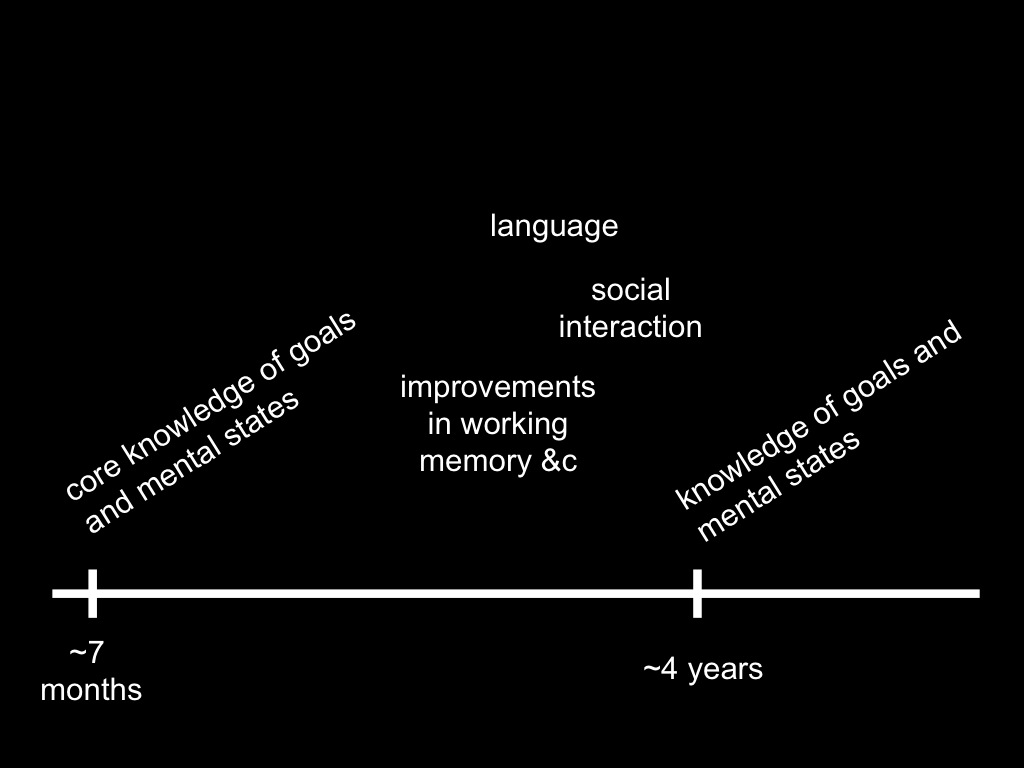Click here and press the right key for the next slide (or swipe left)
also ...
Press the left key to go backwards (or swipe right)
Press n to toggle whether notes are shown (or add '?notes' to the url before the #)
Press m or double tap to slide thumbnails (menu)
Press ? at any time to show the keyboard shortcuts

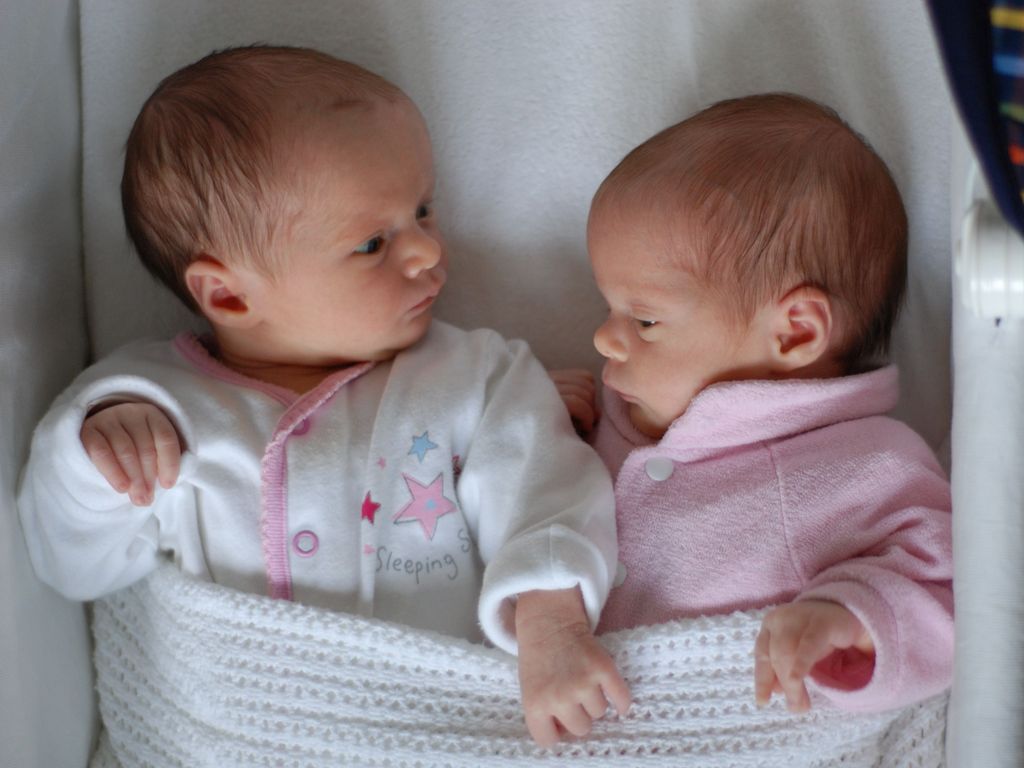
Origins of Mind : 03
A-tasks
Children fail
because they rely on a model of minds and actions that does not incorporate beliefs
non-A-tasks
Children pass
by relying on a model of minds and actions that does incorporate beliefs
dogma
the
of mindreading
a clue ...
‘chimpanzees understand … intentions … perception and knowledge’
‘chimpanzees probably do not understand others in terms of a fully human-like belief–desire psychology’
Call & Tomasello (2008, 191)

‘the core theoretical problem in ... animal mindreading is that ... the conception of mindreading that dominates the field ... is too underspecified to allow effective communication among researchers’
Heyes (2015, 321)




‘the core theoretical problem in ... animal mindreading is that ... the conception of mindreading that dominates the field ... is too underspecified to allow effective communication among researchers’
Heyes (2015, 321)

1. models
2. processes

Minimal Theory of Mind
What models of minds and actions
underpin which mental state tracking processes?





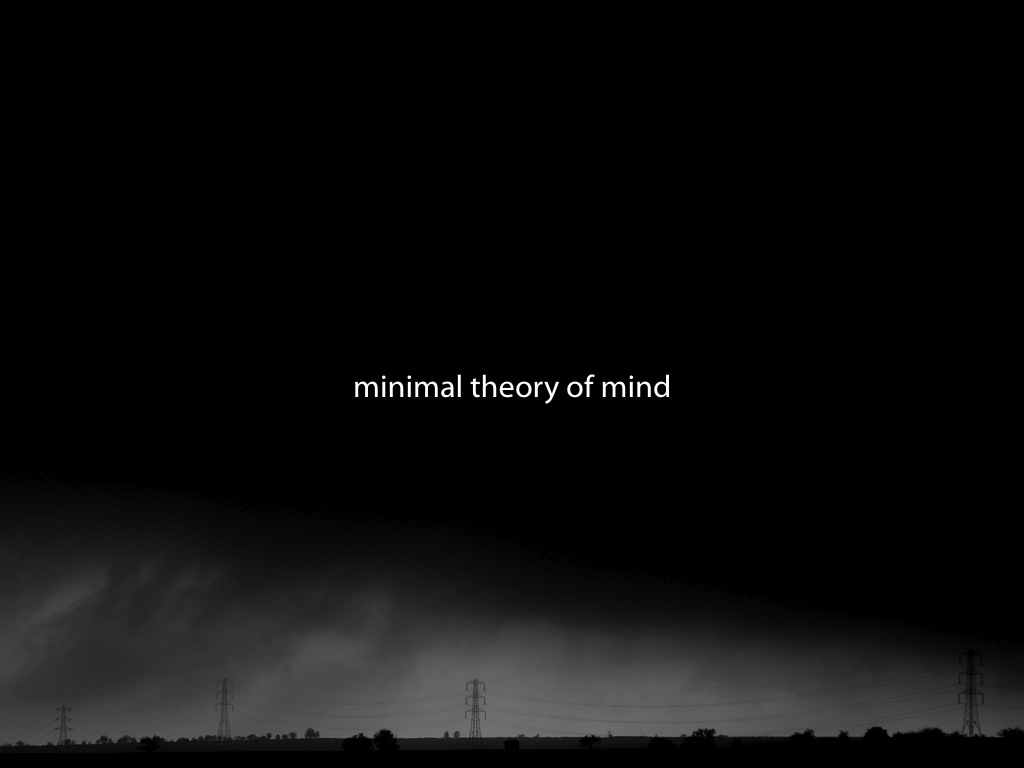
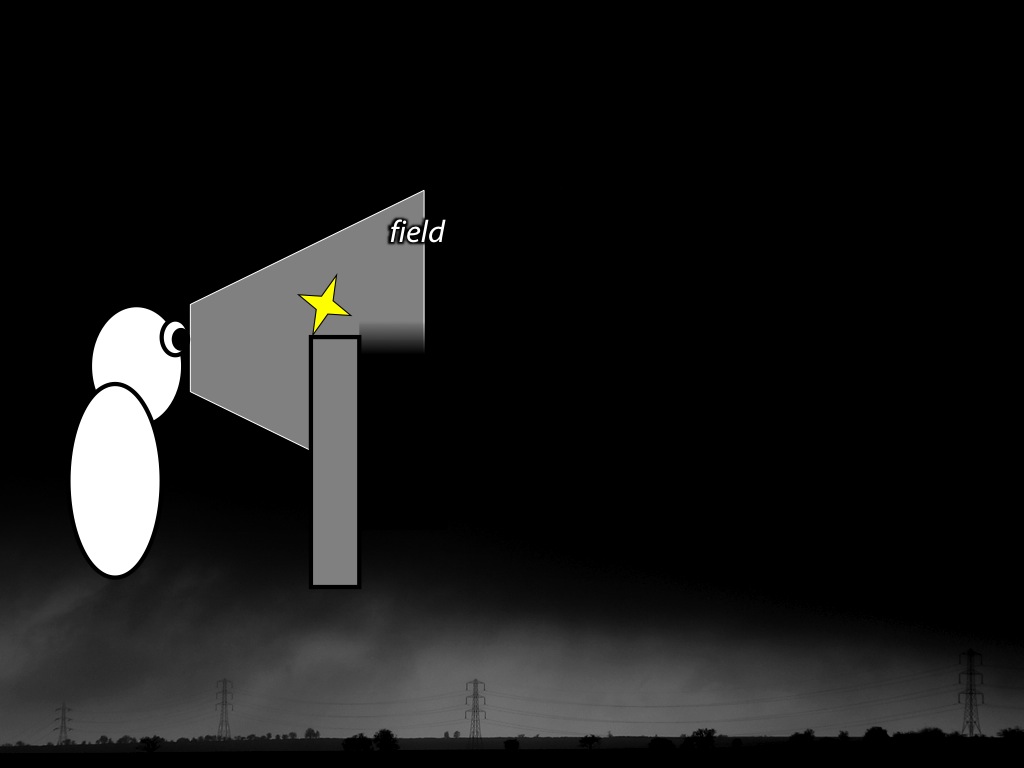
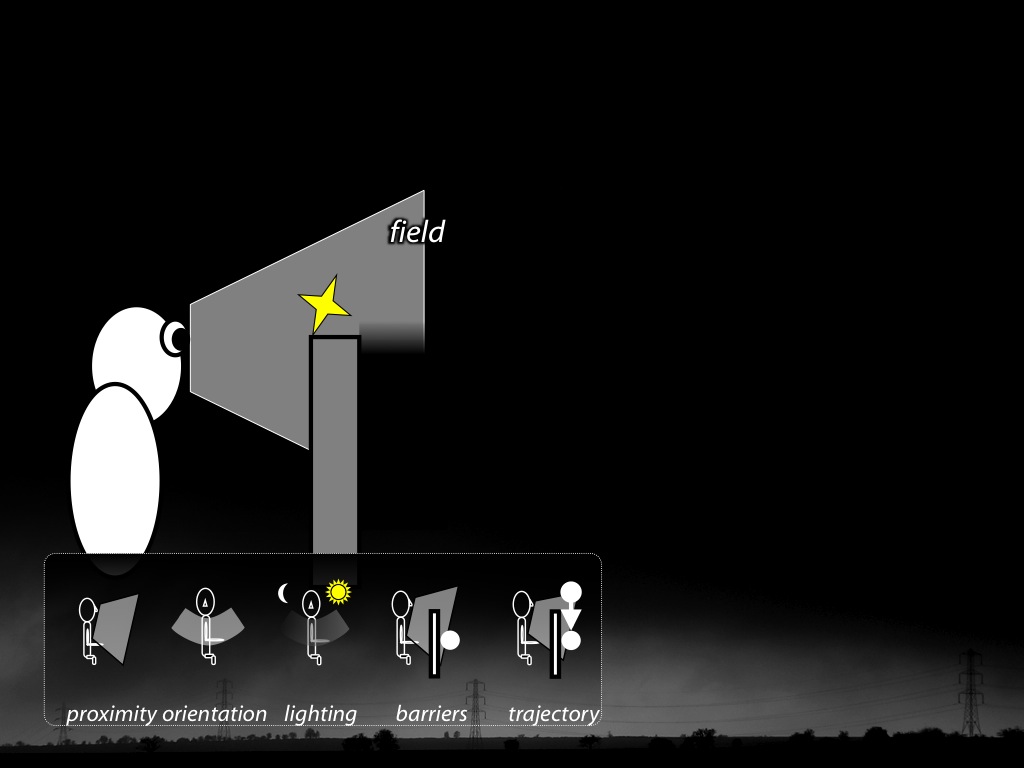
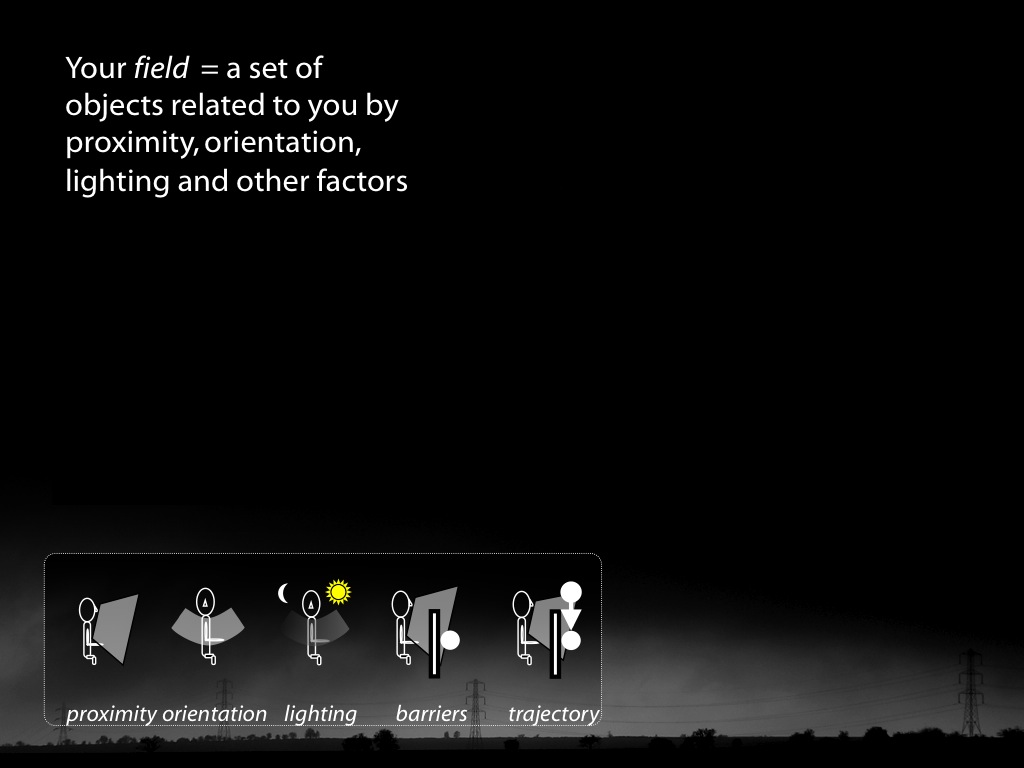
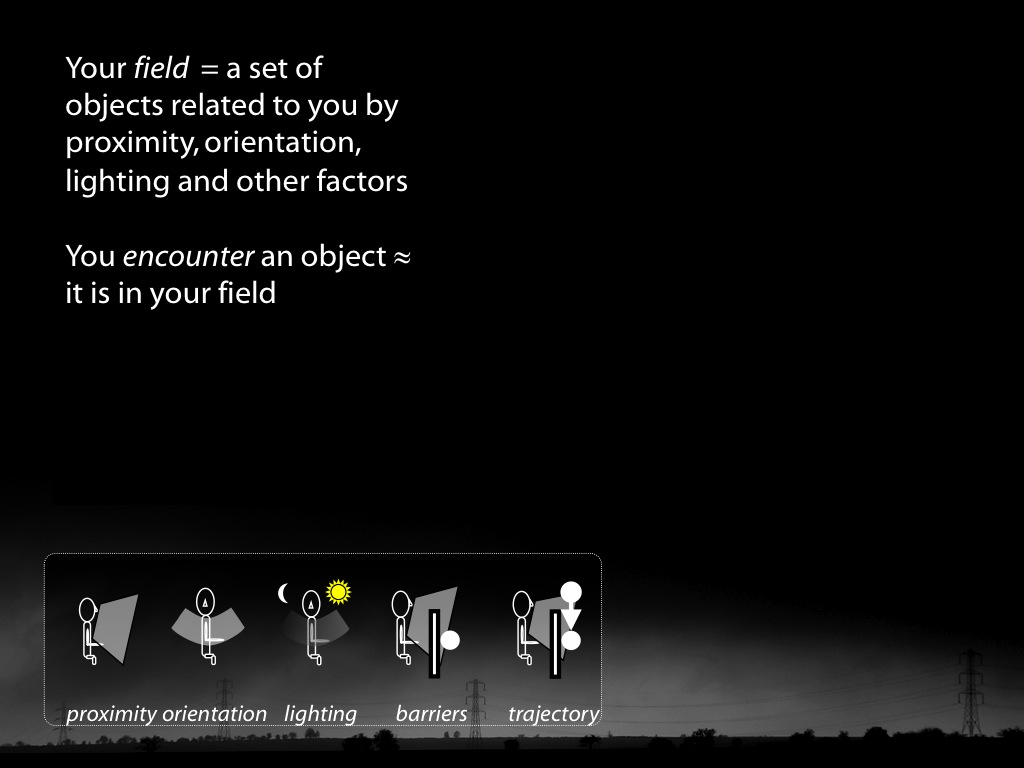
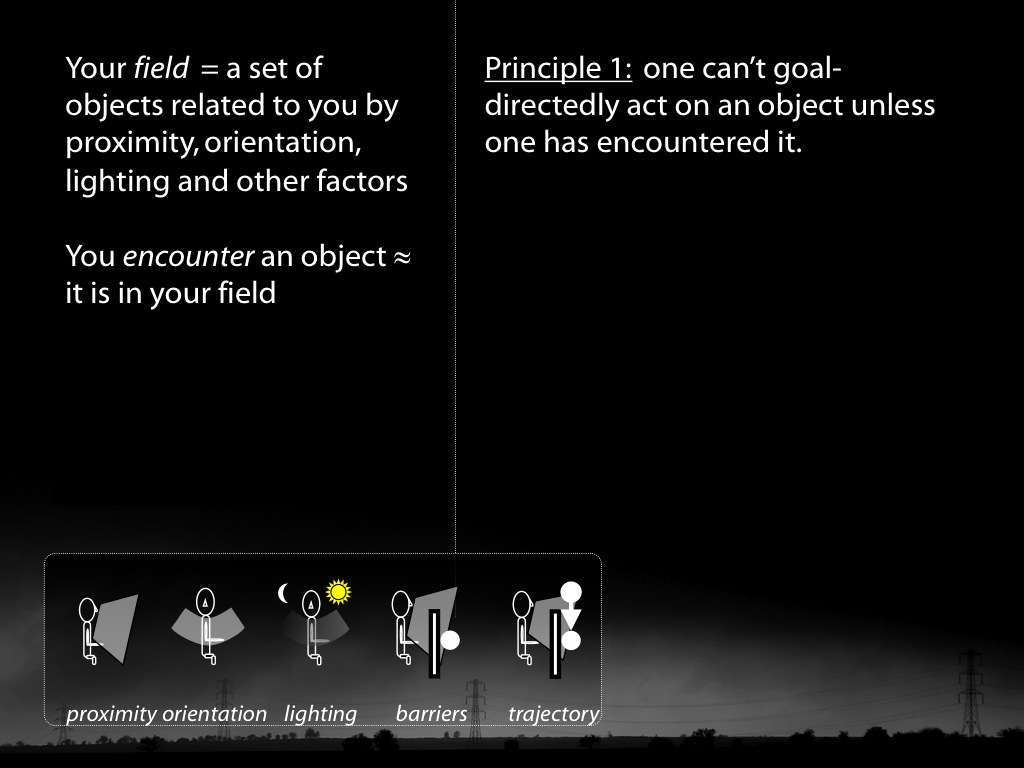
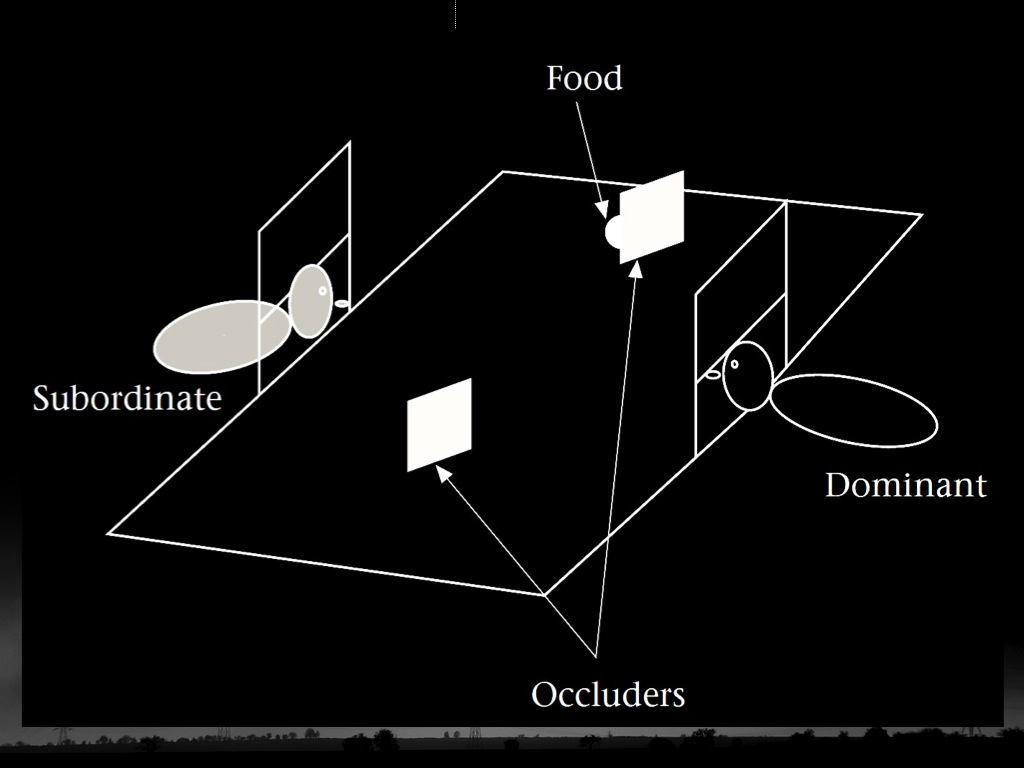
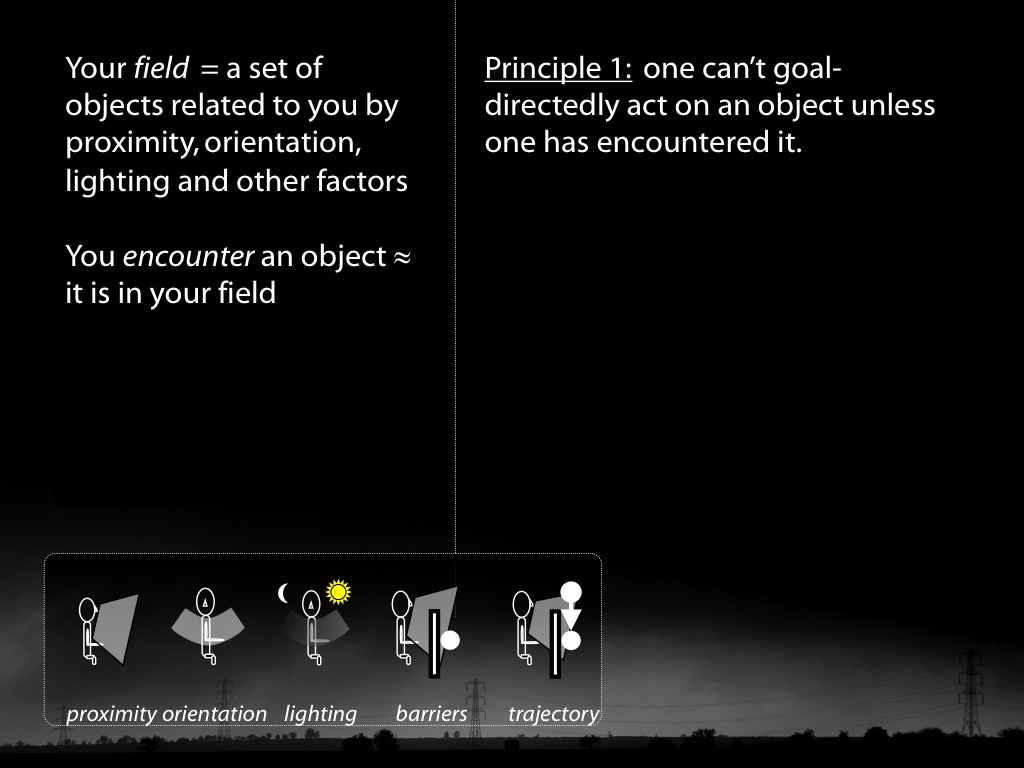
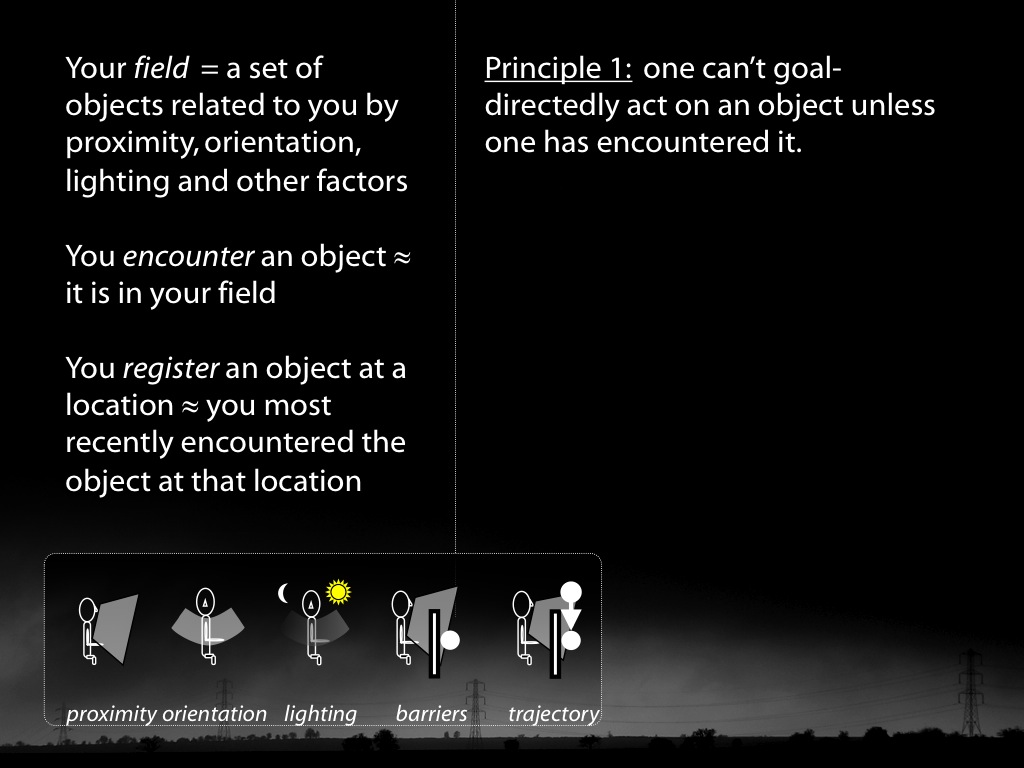
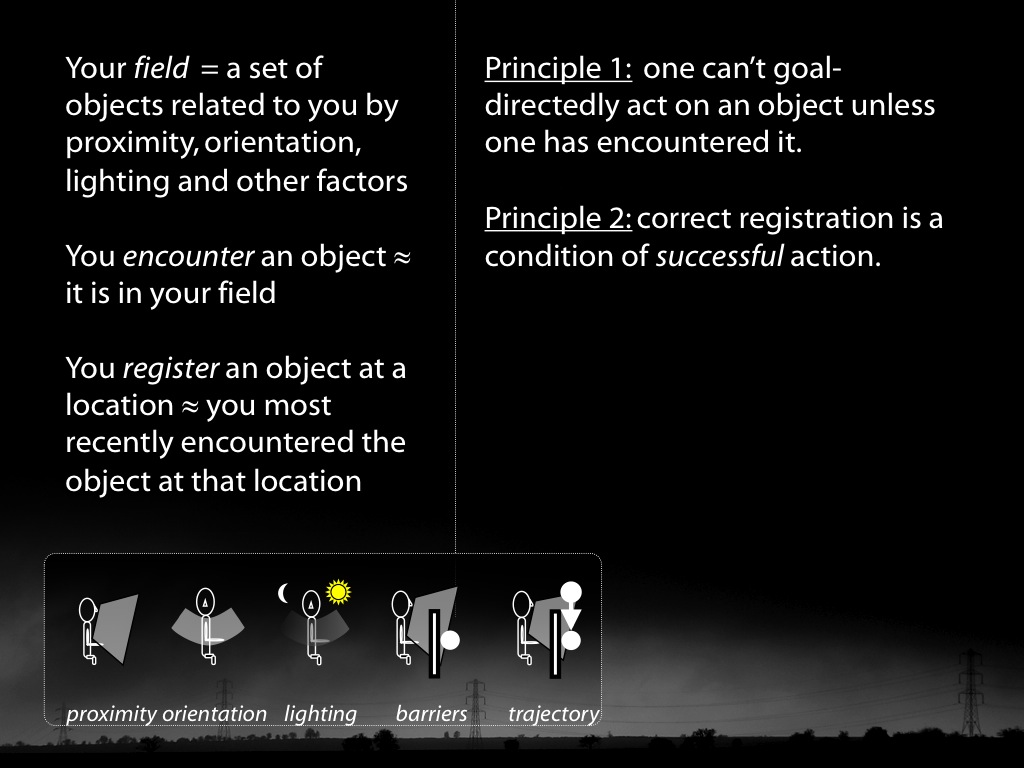
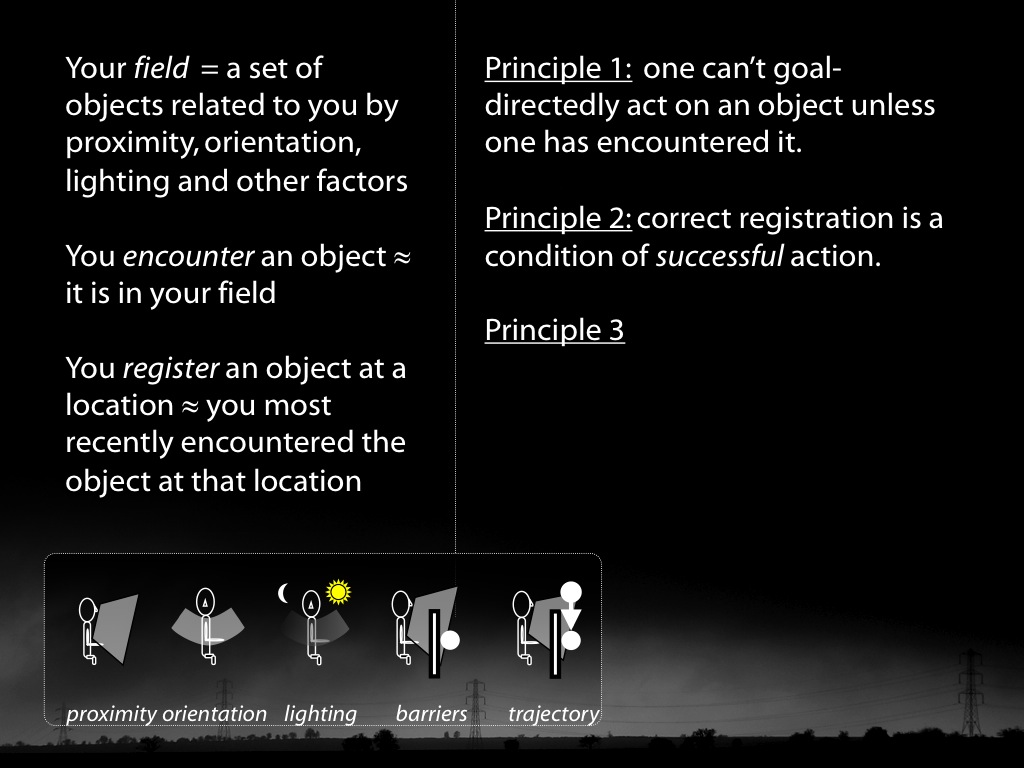
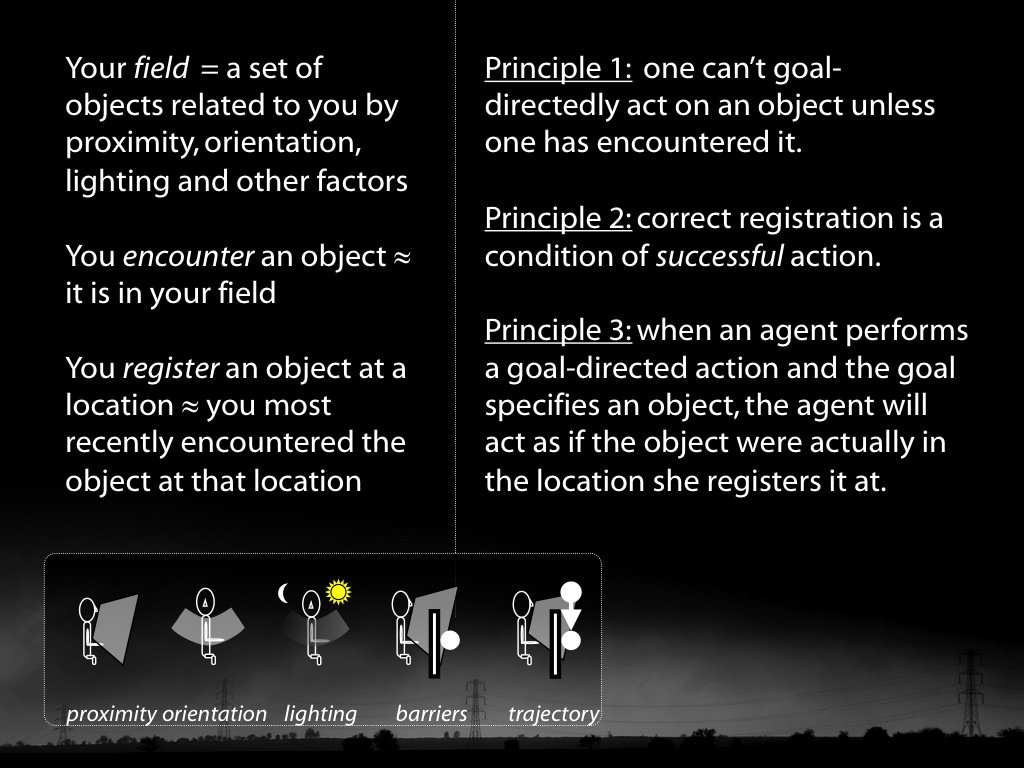
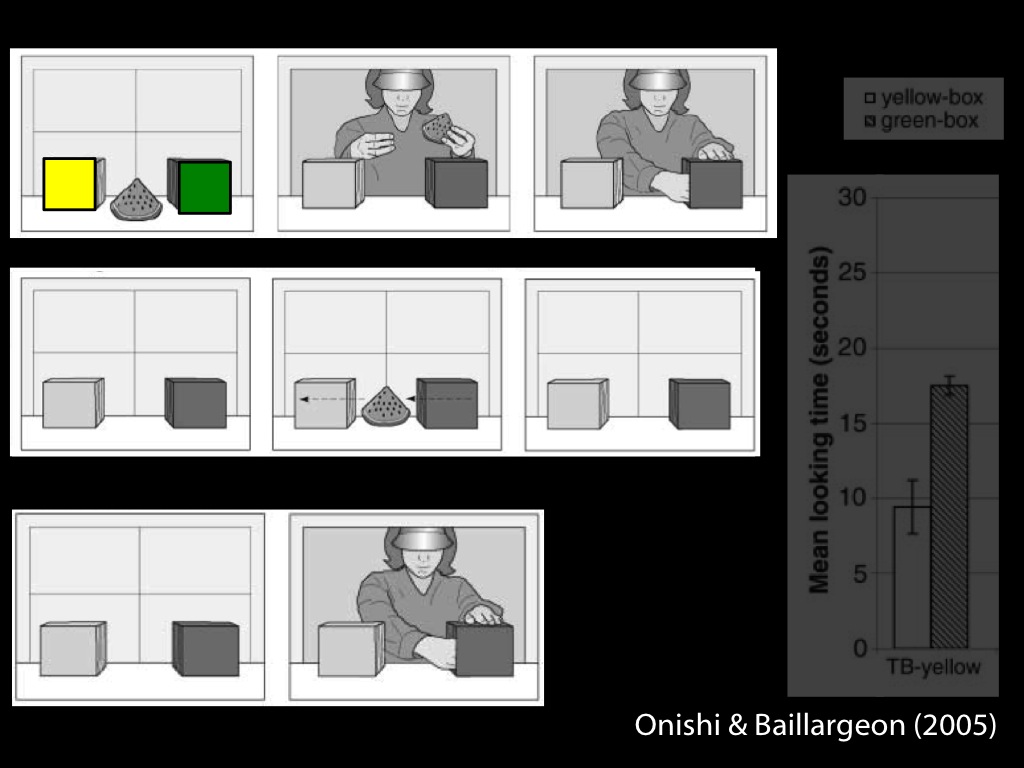
What models of minds and actions
underpin which mental state tracking processes?
Fact:
Minimal theory of mind specifics a model of minds and actions,
one which could in principle characterise how infants (or nonhuman apes, corvids or other animals) track mental states.
Conjecture:
Nonhuman mindreading processes are characterised by a minimal model of minds and actions.
Evidence?
Q1
How do observations about tracking support conclusions about representing models?
Q2
Why are there dissociations in nonhuman apes’, human infants’ and human adults’ performance on belief-tracking tasks?
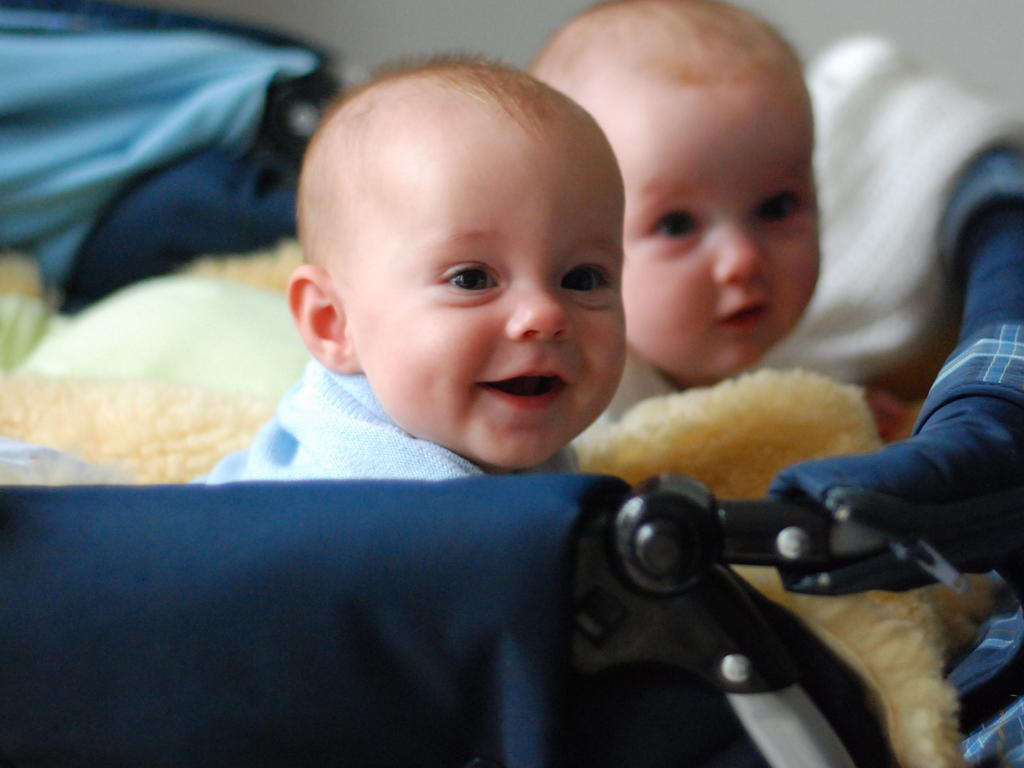
Signature Limits

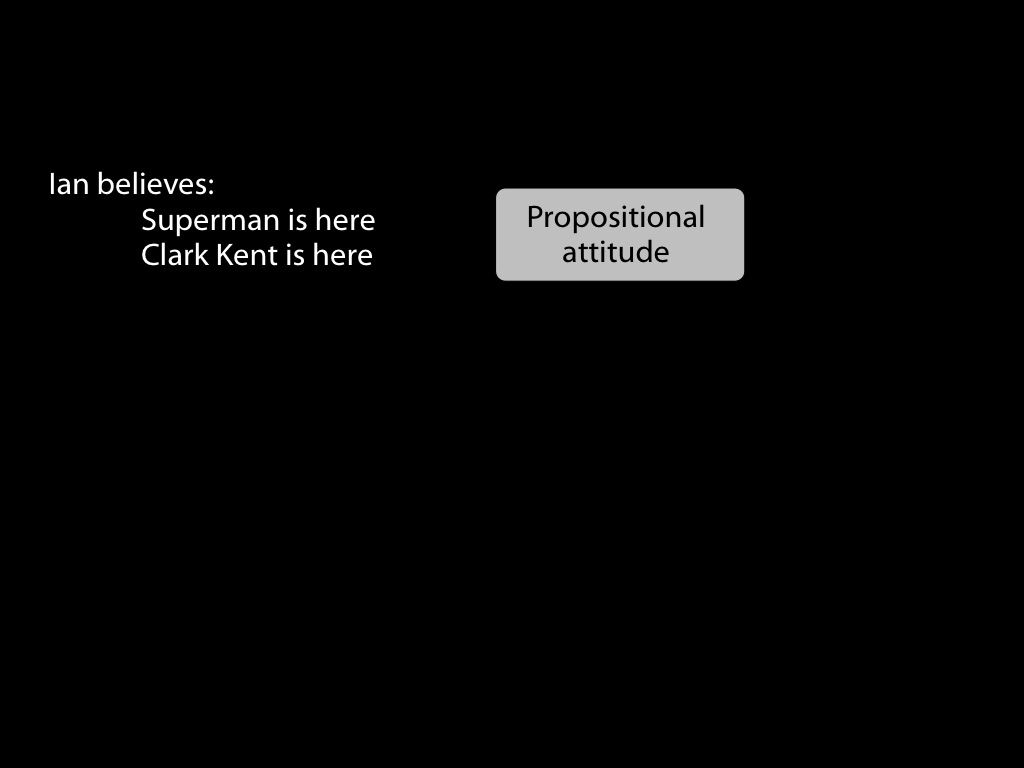

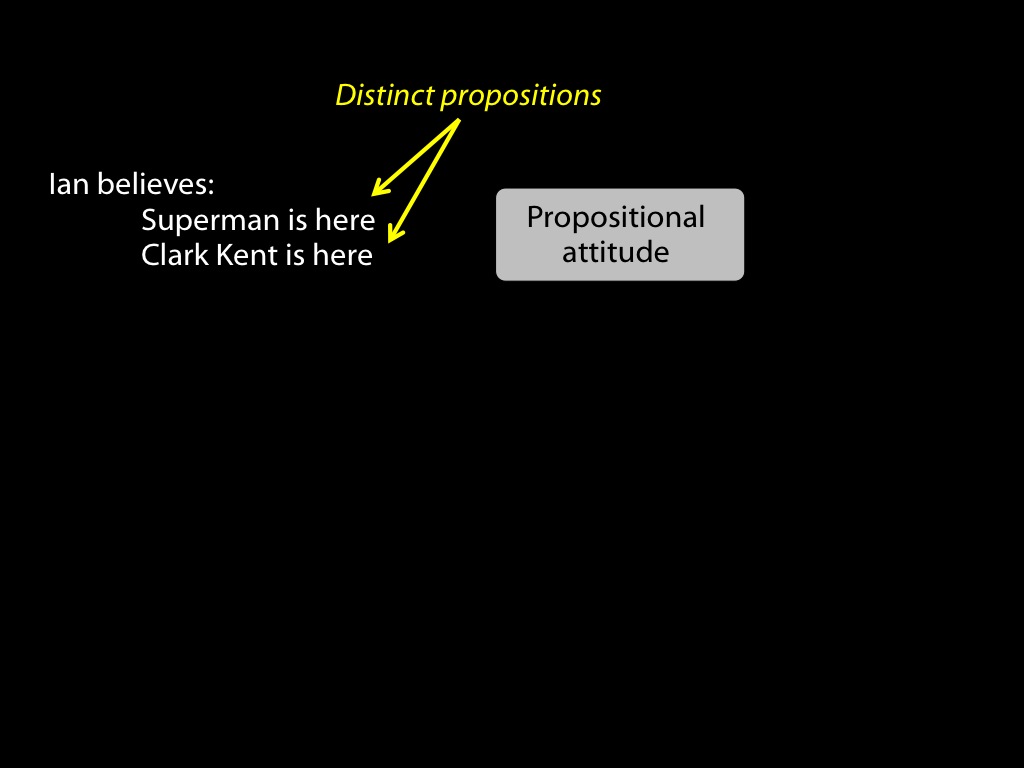

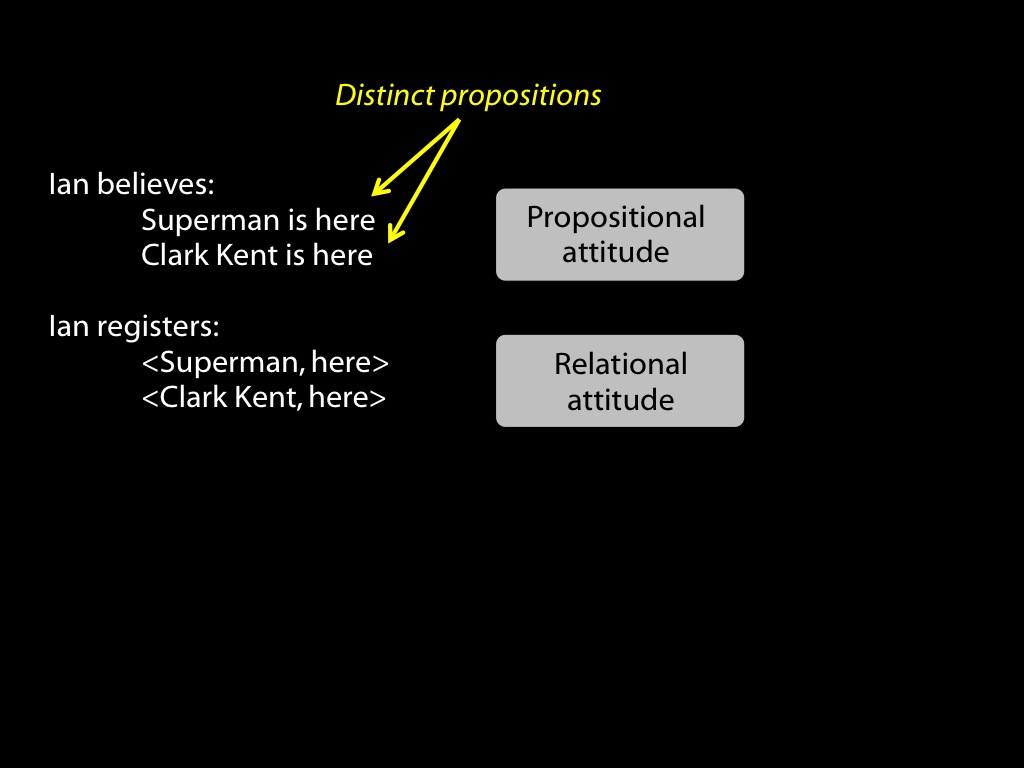

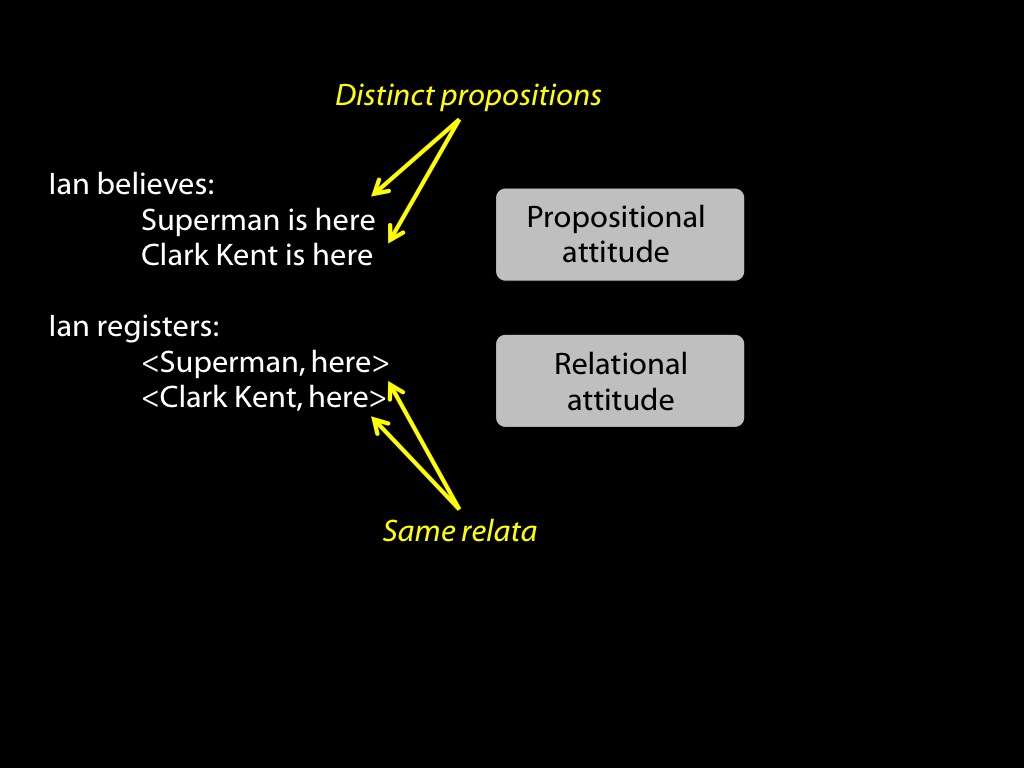

signature limits generate predictions
Hypothesis:
Infants’ belief-tracking abilities rely on minimal models of the mental.
Prediction:
Infants’ belief-tracking is subject to the signature limits of minimal models.

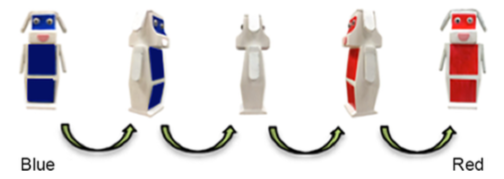

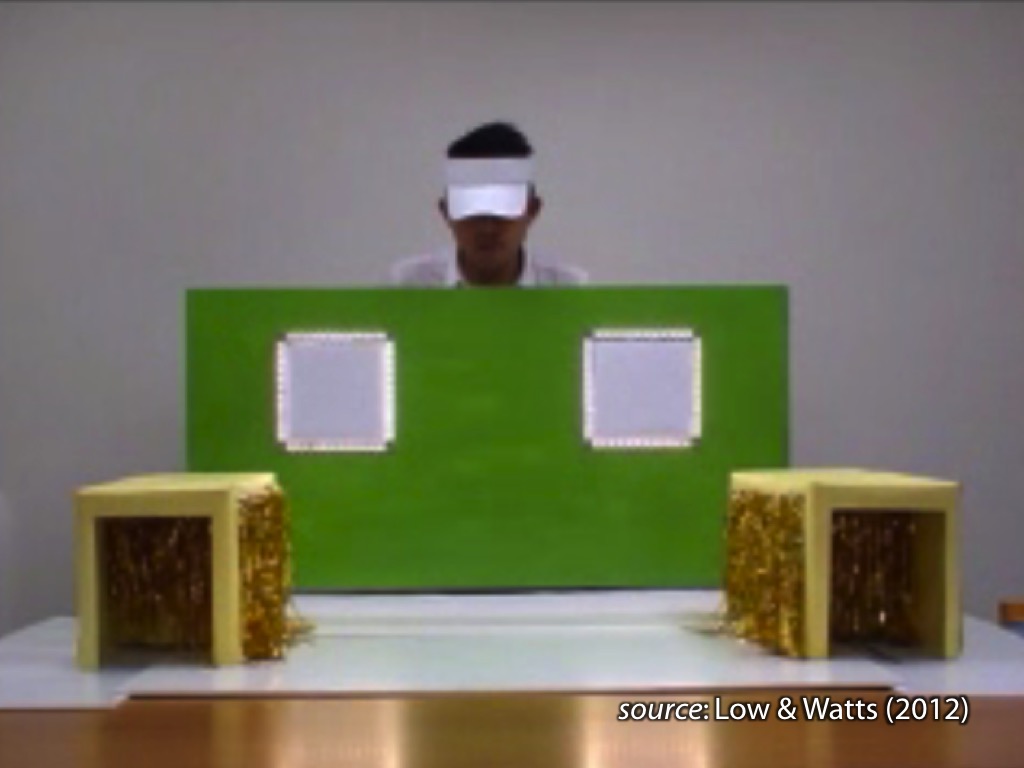



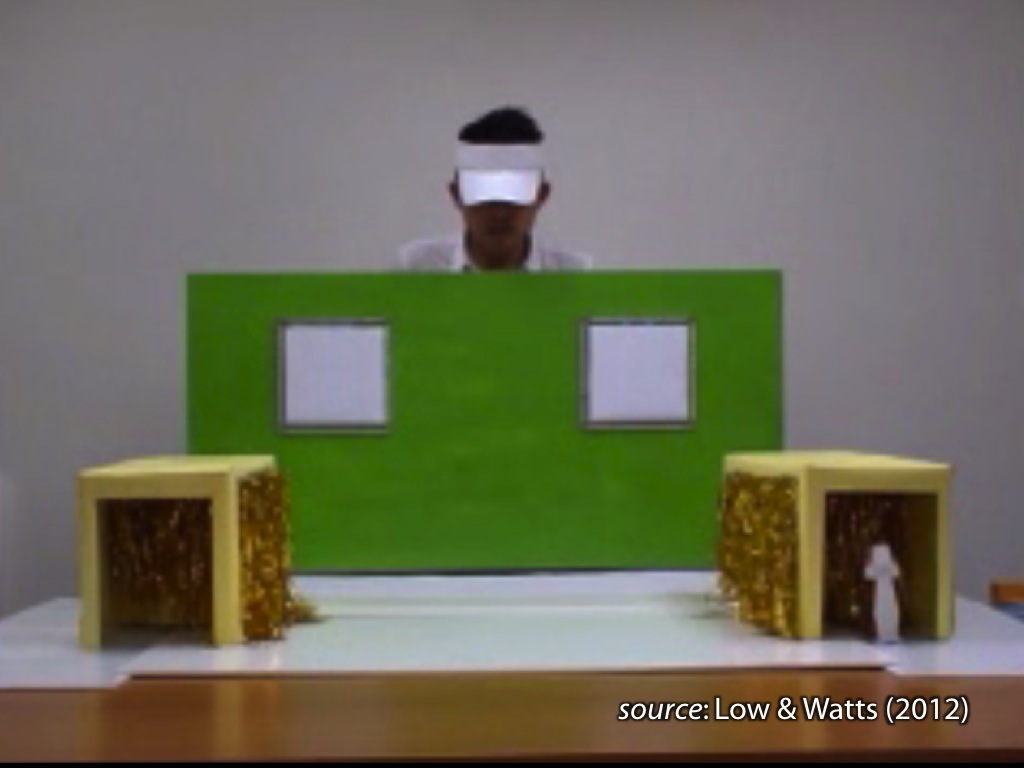

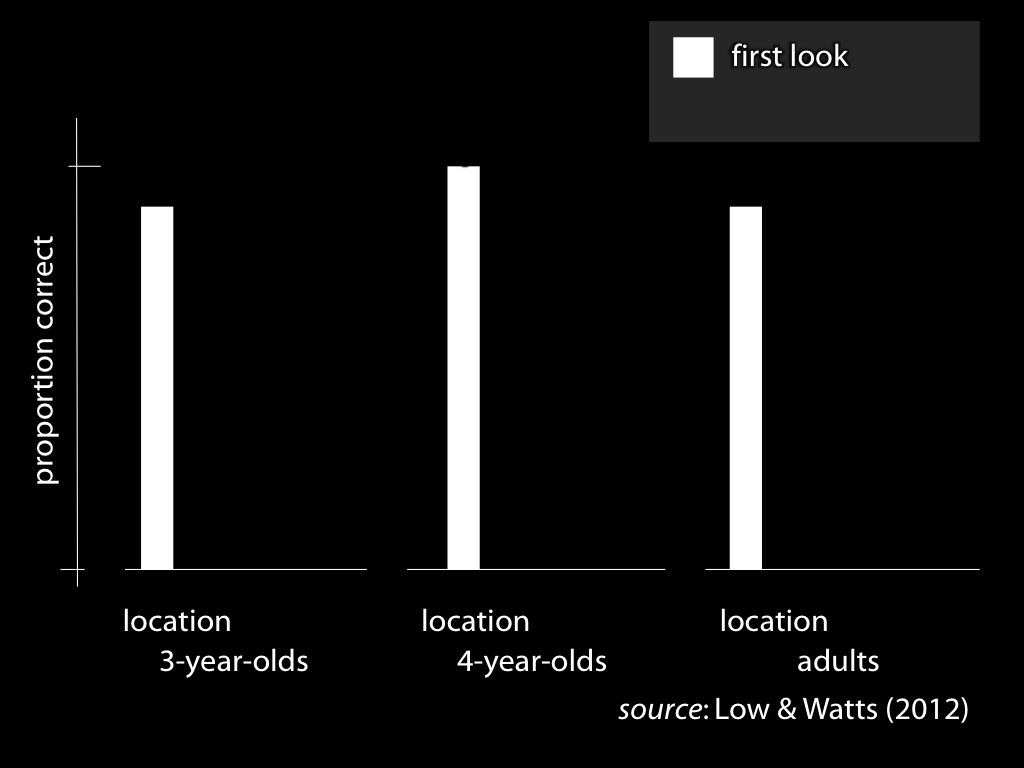
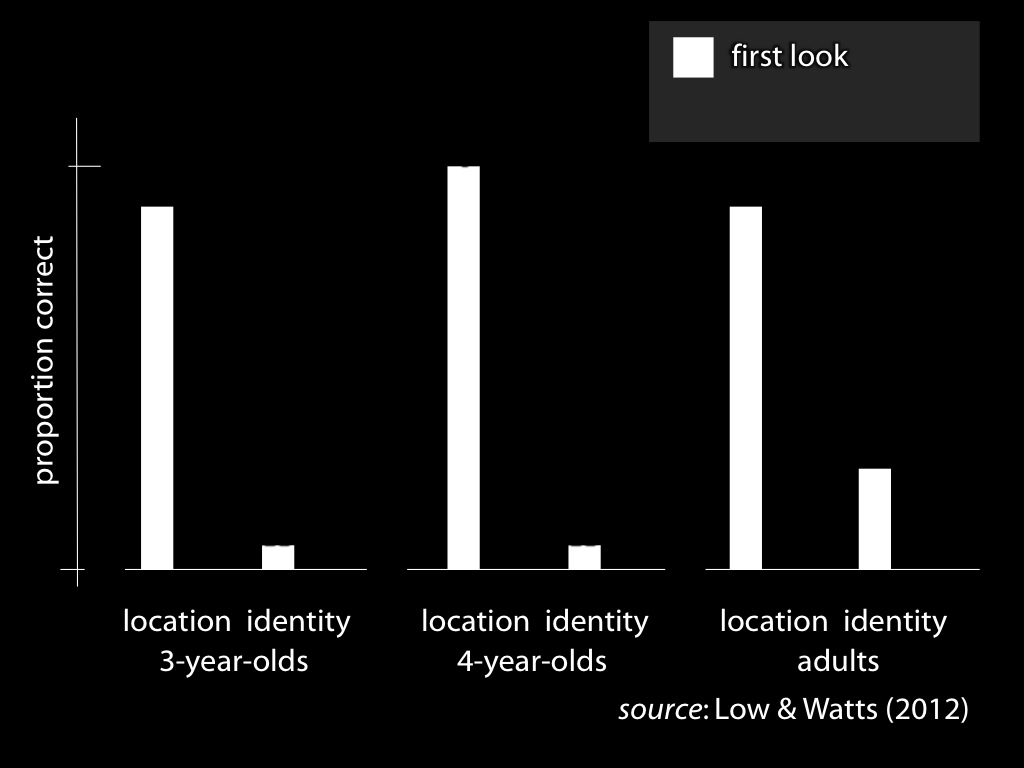
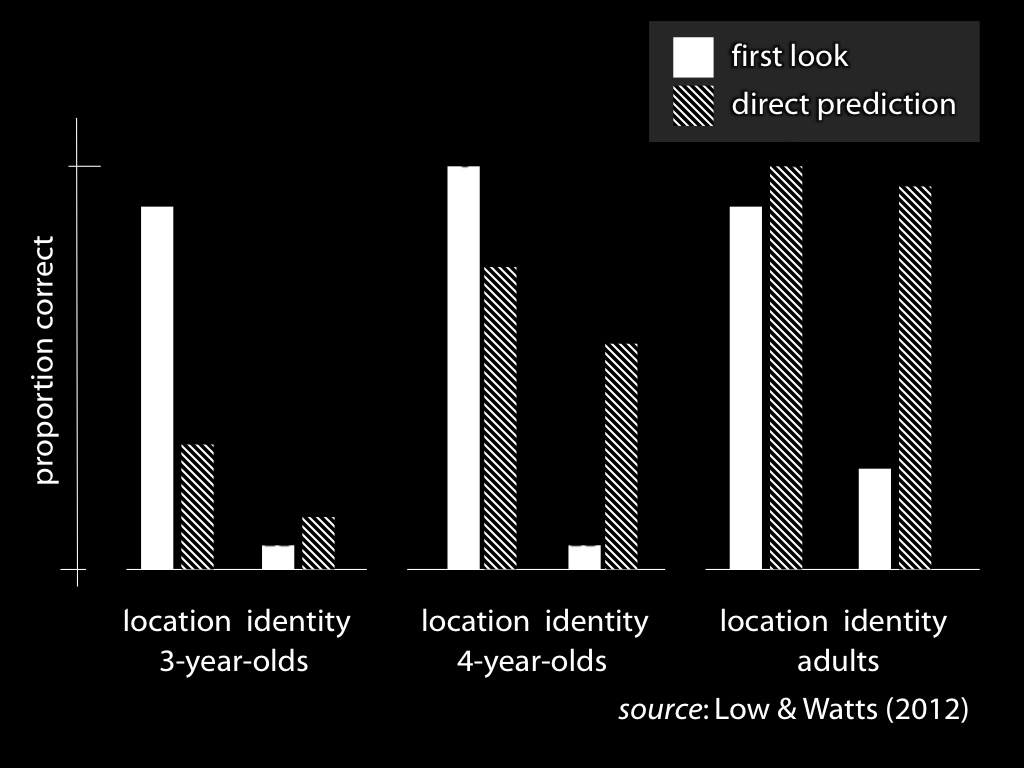
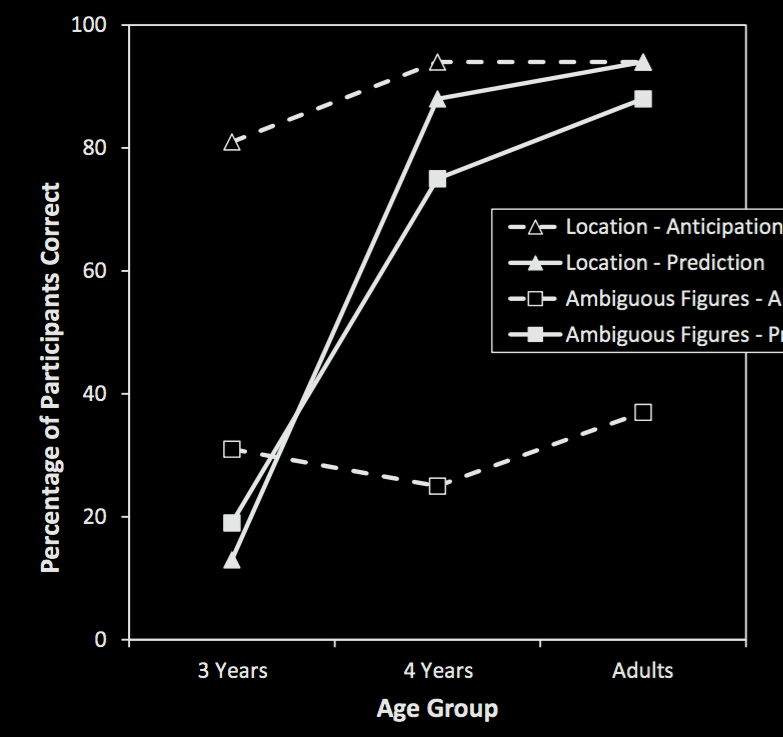
Low et al, 2014 figure 2
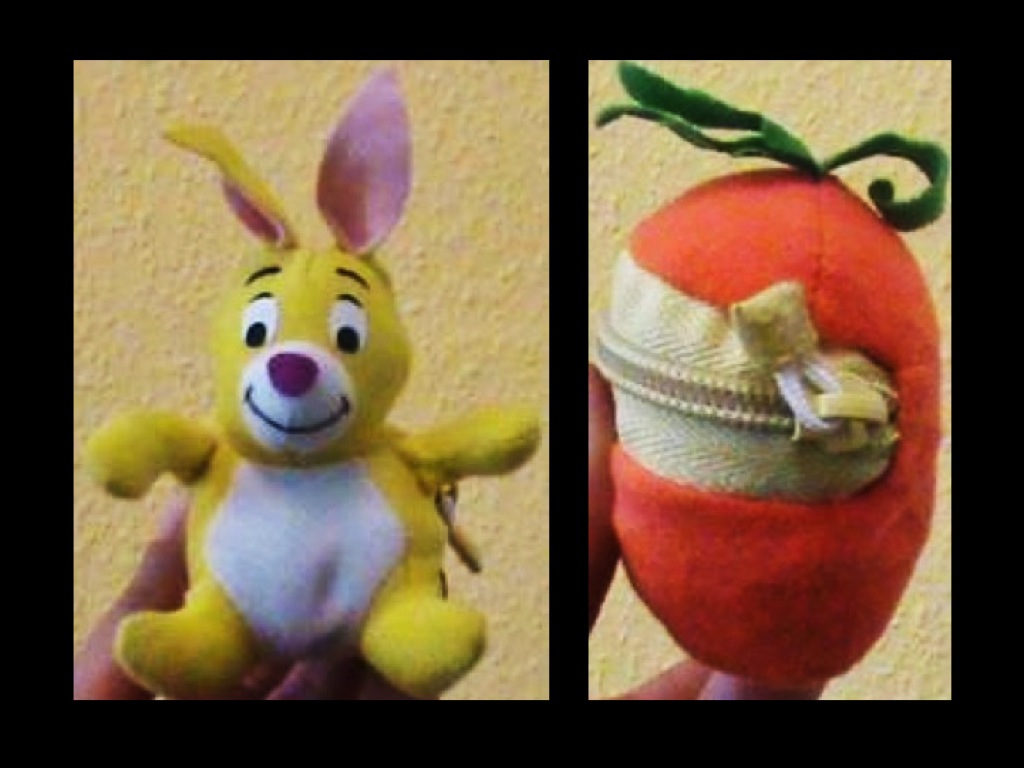
signature limits generate predictions
Hypothesis:
Infants’ belief-tracking abilities rely on minimal models of the mental.
Prediction:
Infants’ belief-tracking is subject to the signature limits of minimal models.
reidentifying systems:
same signature limit -> same process
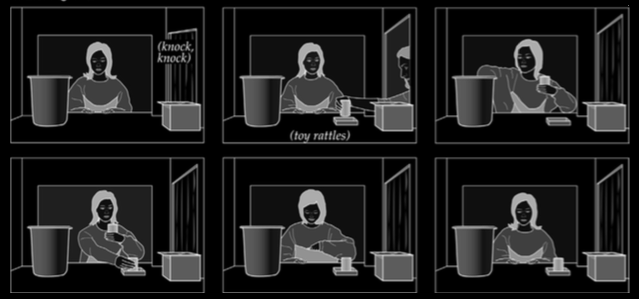
Scott et al (2015, figure 2b)
‘the theoretical arguments offered [...] are [...] unconvincing, and [...] the data can be explained in other terms’
Carruthers (2015)
signature limits generate predictions
Hypothesis:
Infants’ belief-tracking abilities rely on minimal models of the mental.
Prediction:
Infants’ belief-tracking is subject to the signature limits of minimal models.
Q1
How do observations about tracking support conclusions about representing models?
Q2
Why are there dissociations in nonhuman apes’, human infants’ and human adults’ performance on belief-tracking tasks?
1. models [done]
2. processes

Automatic Mindreading in Adults
belief-tracking is sometimes but not always automatic

Kovacs et al, 2010

Kovacs et al, 2010

Kovacs et al, 2010

Kovacs et al, 2010

Kovacs et al, 2010

Kovacs et al, 2010

Kovacs et al, 2010

Kovacs et al, 2010

Kovacs et al, 2010

Kovacs et al, 2010
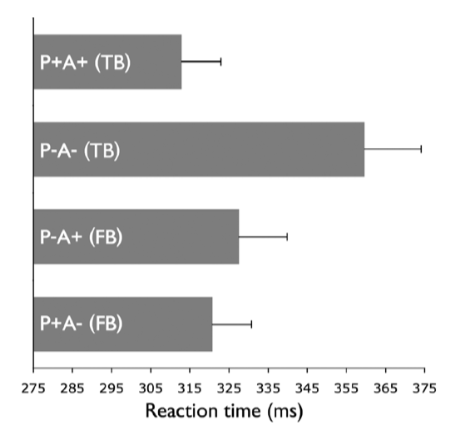
Kovacs et al, 2010 figure 1A
belief-tracking is sometimes but not always automatic
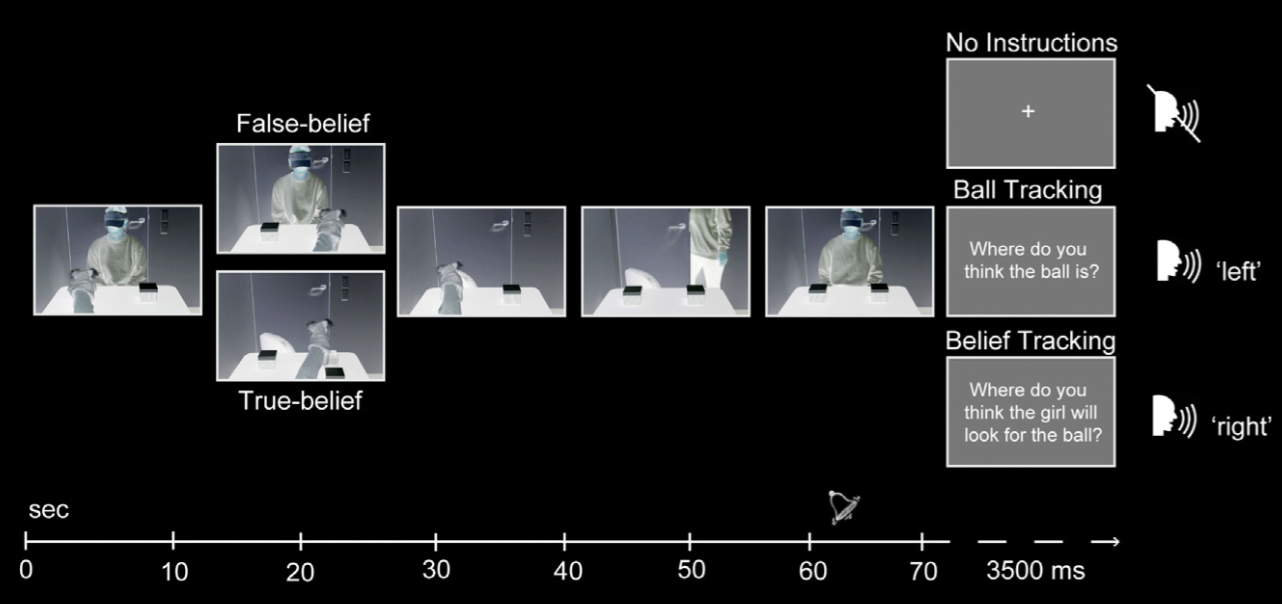
Schneider et al (2014, figure 1)
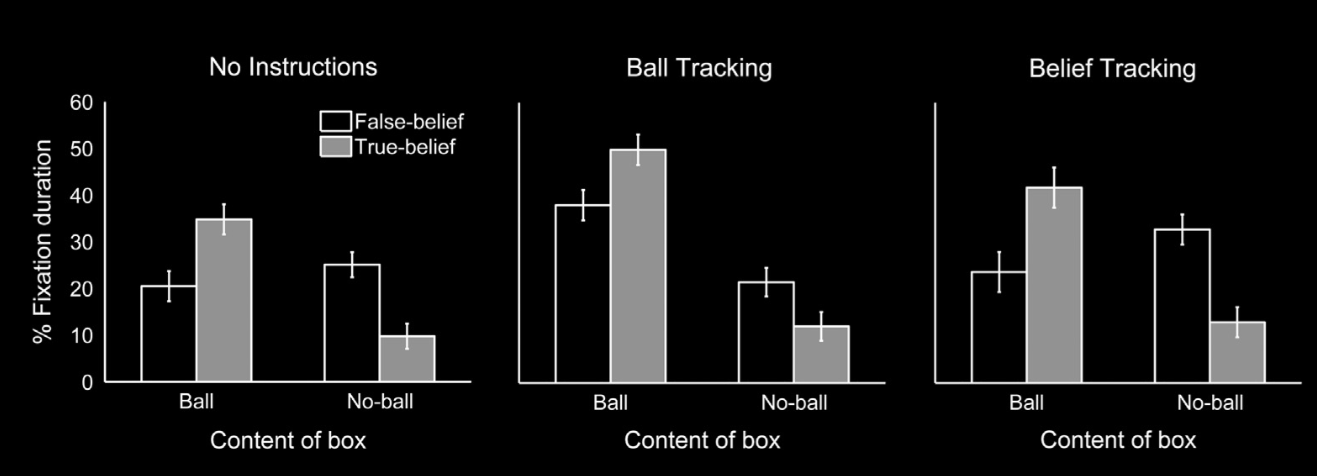
Schneider et al (2014, figure 3)
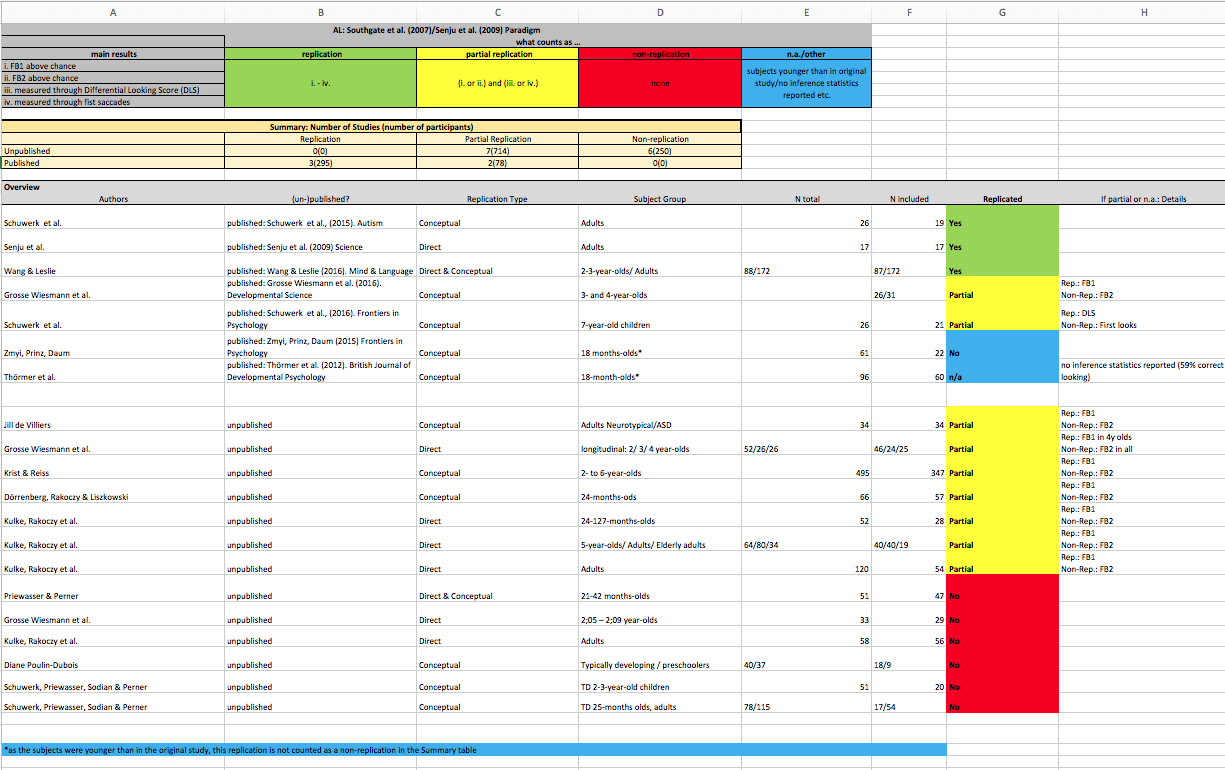
belief-tracking is sometimes but not always automatic



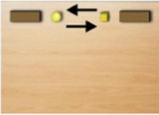

van der Wel et al (2014, figure 1)
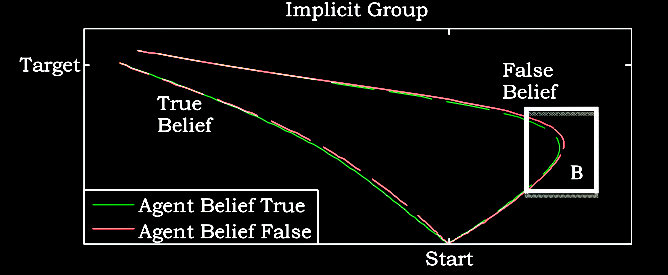
van der Wel et al (2014, figure 2)
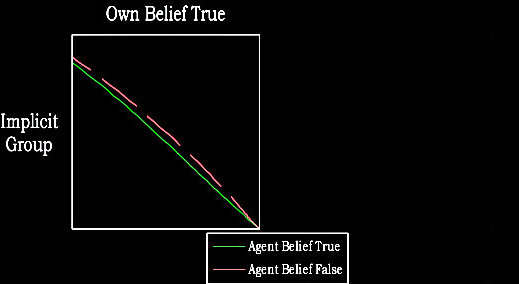
van der Wel et al (2014, figure 2)
belief-tracking is sometimes but not always automatic
aside: altercentric interference vs procative gaze vs movement trajectories
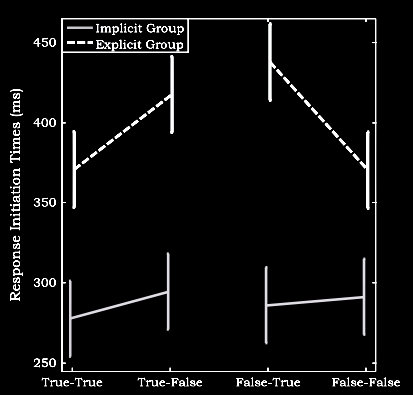
van der Wel et al (2014, figure 3)
‘they slowed down their responses when there was a belief conflict versus when there was not’
belief-tracking is sometimes but not always automatic
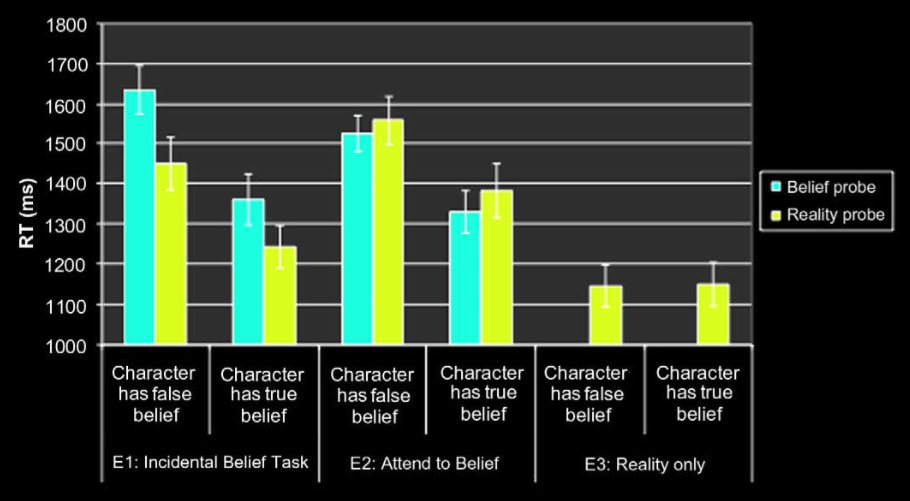
Back & Apperly (2010, fig 1, part)
belief-tracking is sometimes but not always automatic
-- can consume attention and working memory
-- can require inhibition
1. models [done]
2. processes
Q1
How do observations about tracking support conclusions about representing models?
Q2
Why are there dissociations in nonhuman apes’, human infants’ and human adults’ performance on belief-tracking tasks?
reidentifying systems:
same signature limit -> same process
signature limits generate predictions
Hypothesis:
Some automatic belief-tracking systems rely on minimal models of the mental.
Hypothesis:
Infants’ belief-tracking abilities rely on minimal models of the mental.
Prediction:
Automatic belief-tracking is subject to the signature limits of minimal models.
Prediction:
Infants’ belief-tracking is subject to the signature limits of minimal models.
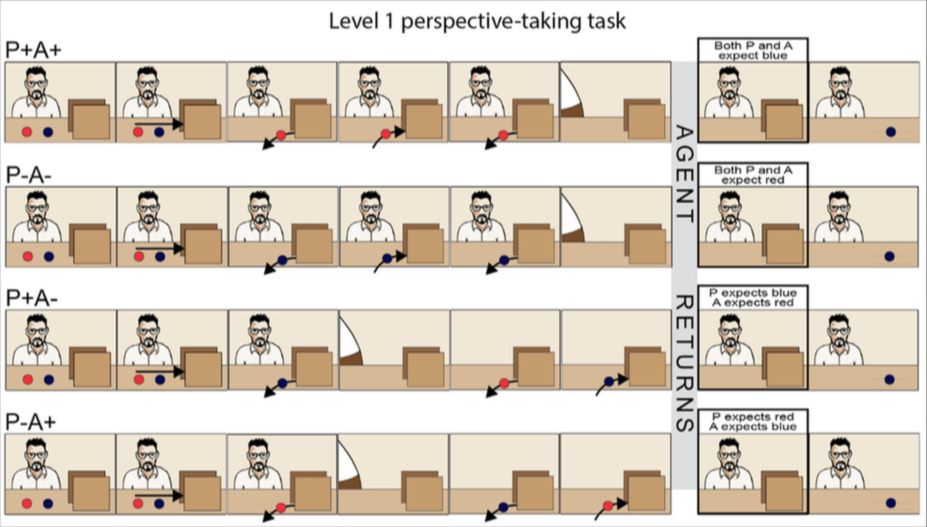
Edwards and Low, 2019 figure 1
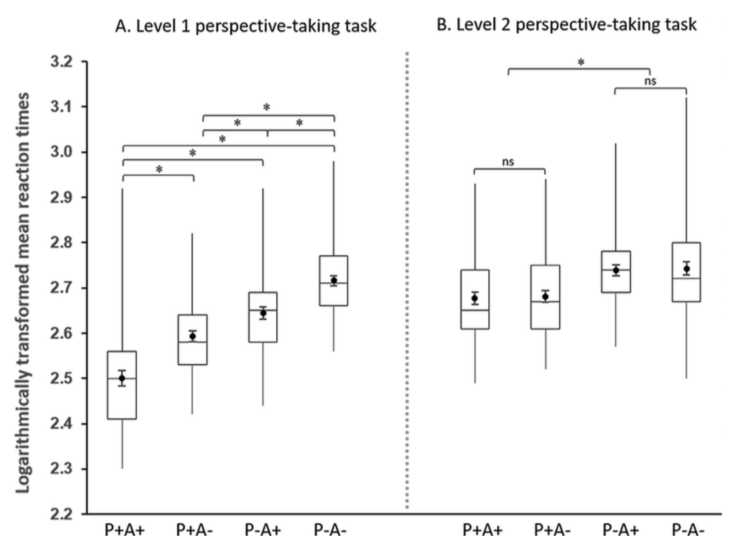
Edwards and Low, 2019 figure 4 (part)
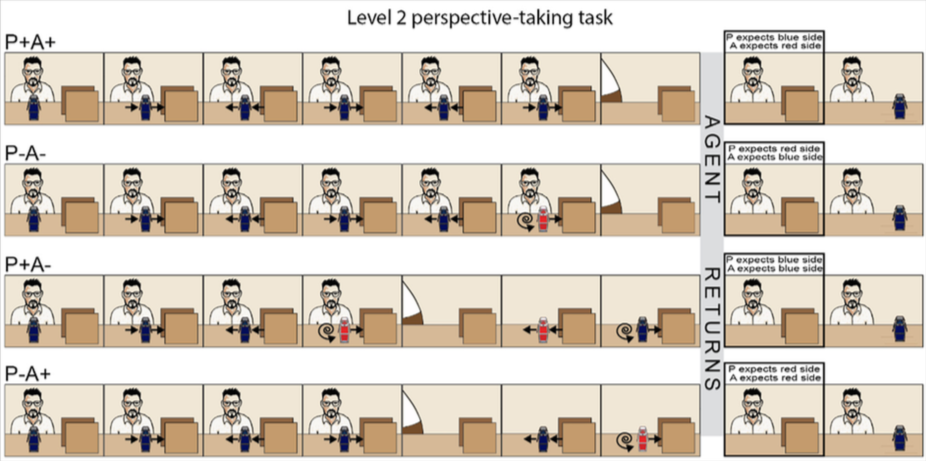
Edwards and Low, 2019 figure 1

Edwards and Low, 2019 figure 4 (part)
signature limits generate predictions
Hypothesis:
Some automatic belief-tracking systems rely on minimal models of the mental.
Hypothesis:
Infants’ belief-tracking abilities rely on minimal models of the mental.
Prediction:
Automatic belief-tracking is subject to the signature limits of minimal models.
Prediction:
Infants’ belief-tracking is subject to the signature limits of minimal models.
reidentifying systems:
same signature limit -> same process
Q1
How do observations about tracking support conclusions about representing models?
Q2
Why are there dissociations in nonhuman apes’, human infants’ and human adults’ performance on belief-tracking tasks?
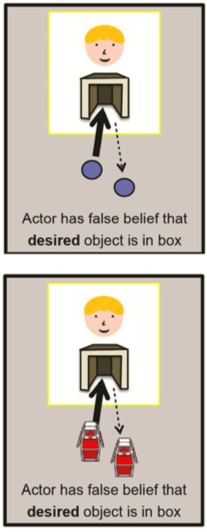
Edwards and Low, 2017 figure 7a
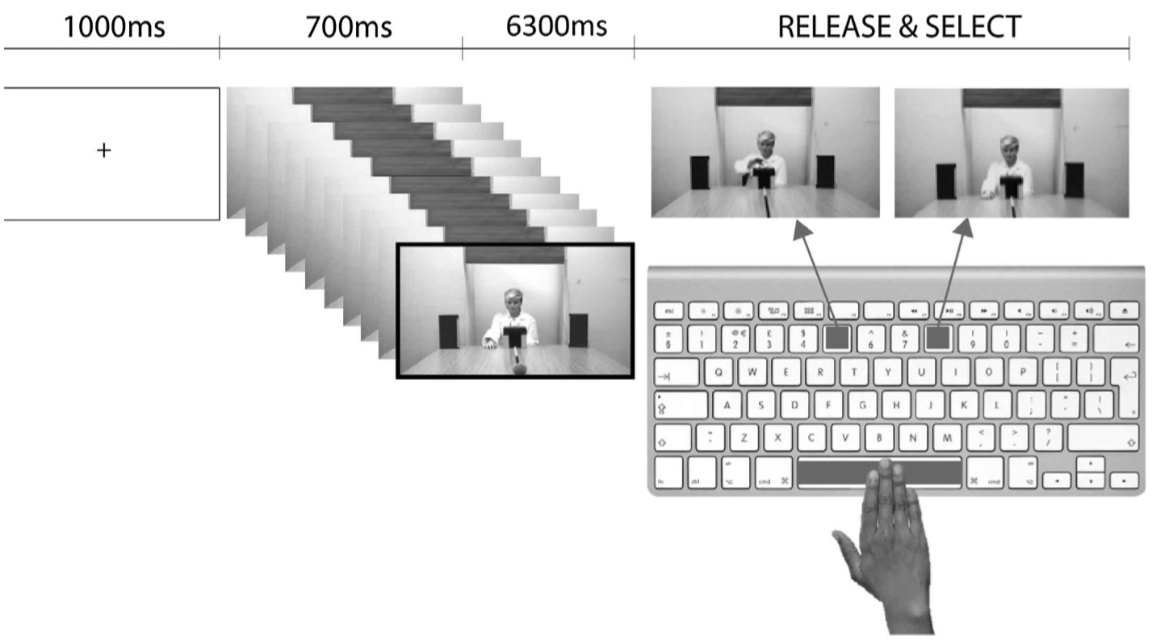
Edwards and Low, 2017 figure 7a
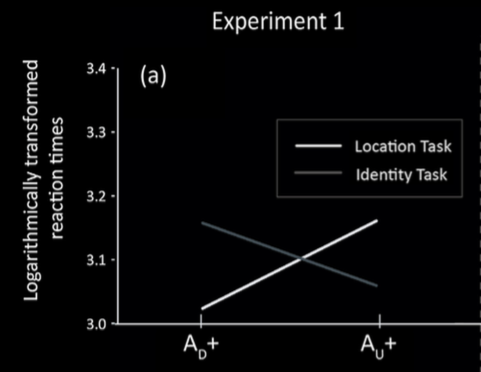
Edwards and Low, 2017 figure 7a
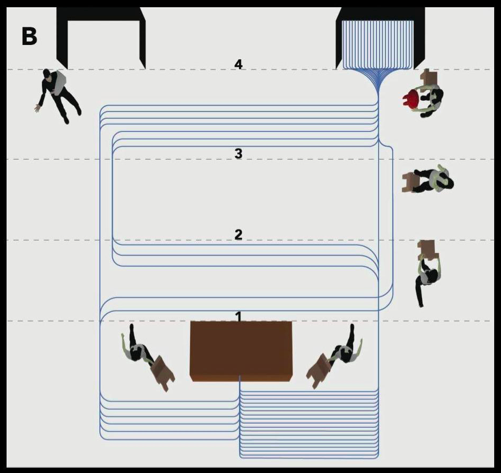
Maymon et al (pilot), figure 4B, used with permission
reidentifying systems:
same signature limit -> same process
An infant mindreading occurs as an automatic mindreading process in adults.
signature limits generate predictions
Hypothesis:
Some automatic belief-tracking systems rely on minimal models of the mental.
Hypothesis:
Infants’ belief-tracking abilities rely on minimal models of the mental.
Prediction:
Automatic belief-tracking is subject to the signature limits of minimal models.
Prediction:
Infants’ belief-tracking is subject to the signature limits of minimal models.
Q1
How do observations about tracking support conclusions about representing models?
Q2
Why are there dissociations in nonhuman apes’, human infants’ and human adults’ performance on belief-tracking tasks?

A Dual Process Theory of Mindreading
A-tasks
Children fail
because they rely on a model of minds and actions that does not incorporate beliefs
non-A-tasks
Children pass
by relying on a model of minds and actions that does incorporate beliefs
dogma
the
of mindreading
Q1
How do observations about tracking support conclusions about representing models?
Q2
Why are there dissociations in nonhuman apes’, human infants’ and human adults’ performance on belief-tracking tasks?
1. models [done]
2. processes
implicit / modular
/ ‘system-1’ / ...
innate
informationally encapsulated
domain specific
subject to limited accessibility
speedy
tacit
subpersonal
unconscious
...
‘it seems doubtful that the often long lists of correlated attributes should come as a package’
Adolphs (2010 p. 759)
‘we wonder whether the dichotomous characteristics … are … perfectly correlated
Keren and Schul (2009, p. 537)
a fresh start


Process 1 -> Response 1
Process 2 -> Response 2

Dual Process Theory of Mindreading (core part)
Two (or more) mindreading processes are distinct:
the conditions which influence whether they occur,
and which outputs they generate,
do not completely overlap.
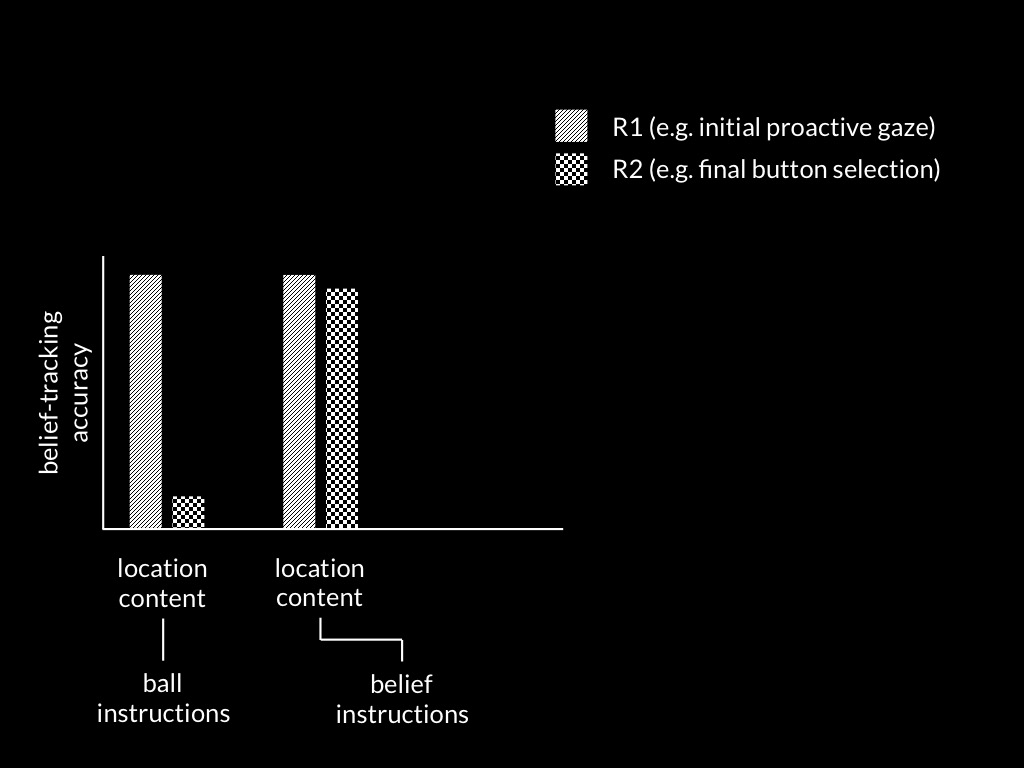
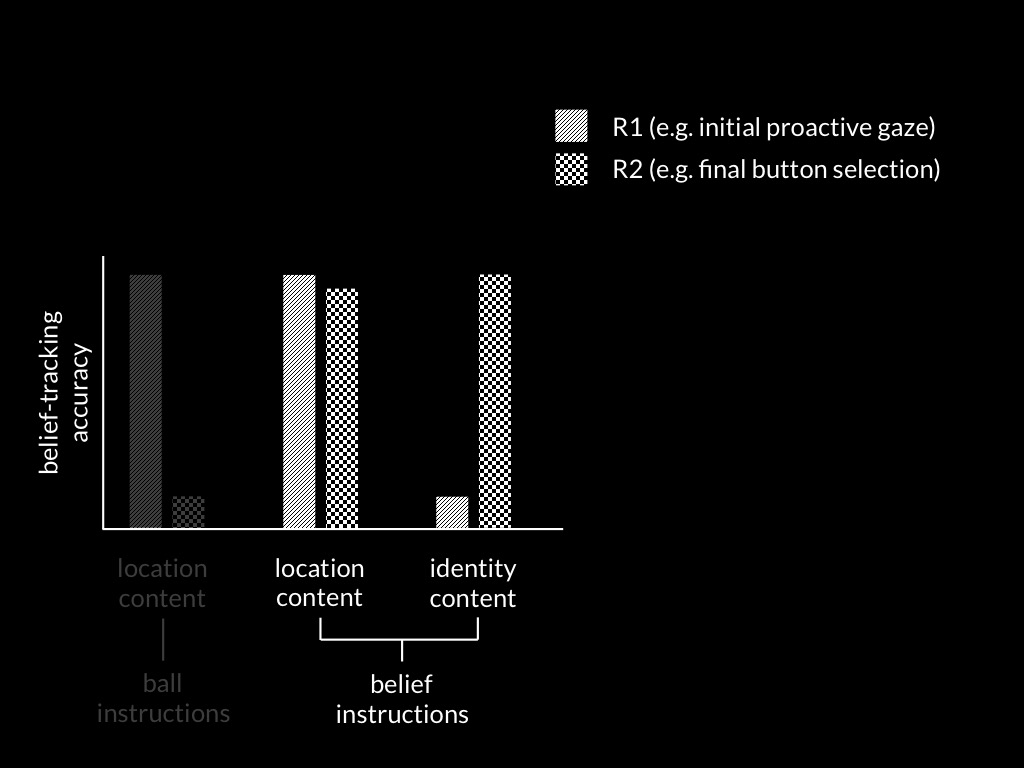
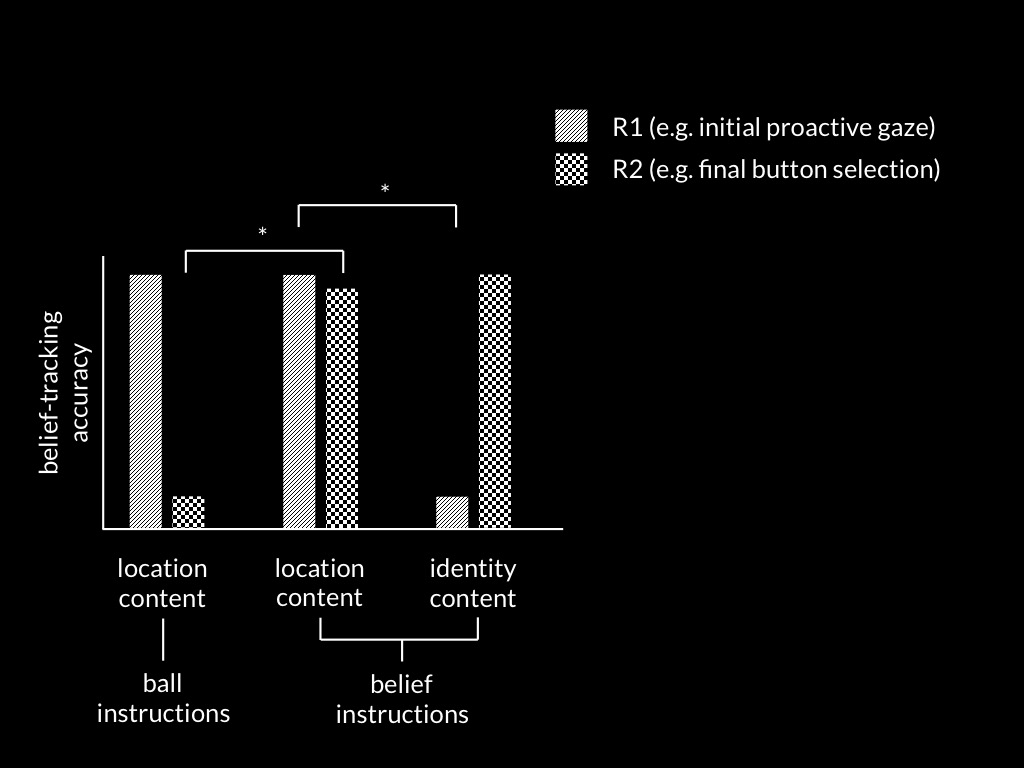
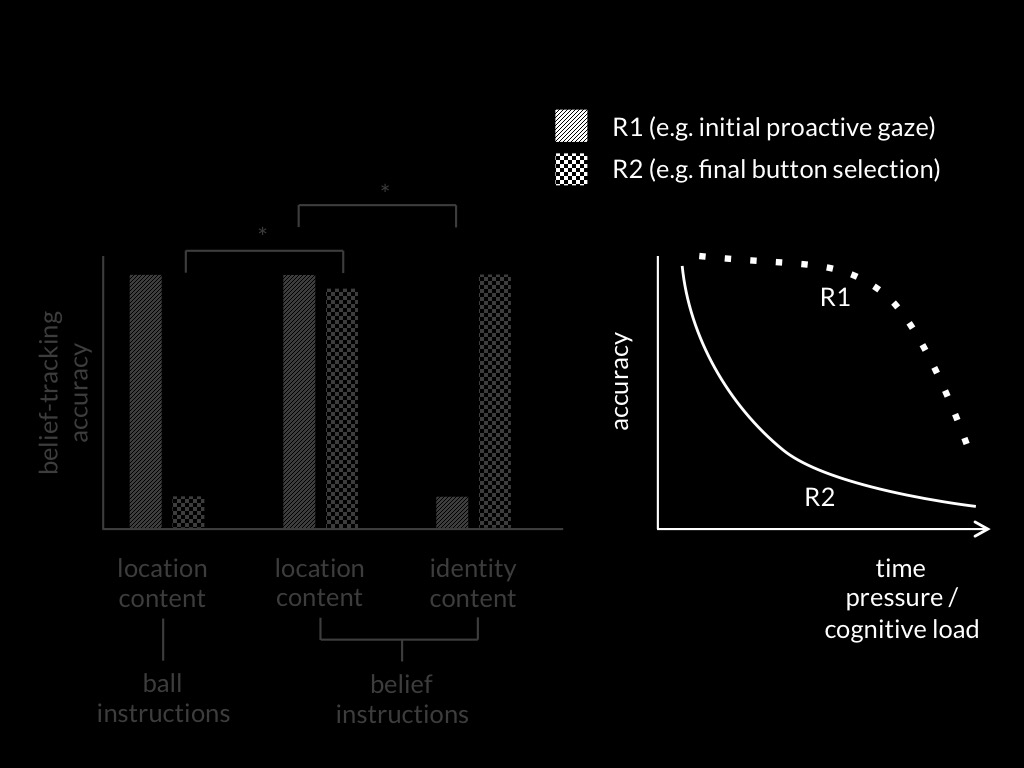
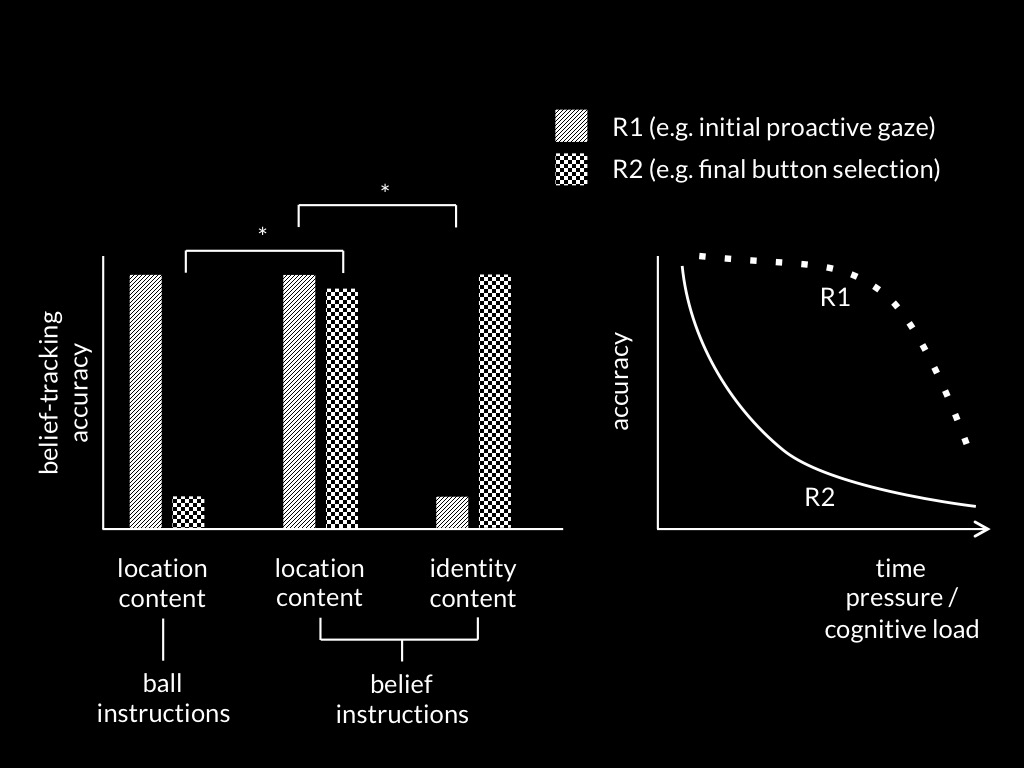
Process 1 -> Response 1
Process 2 -> Response 2
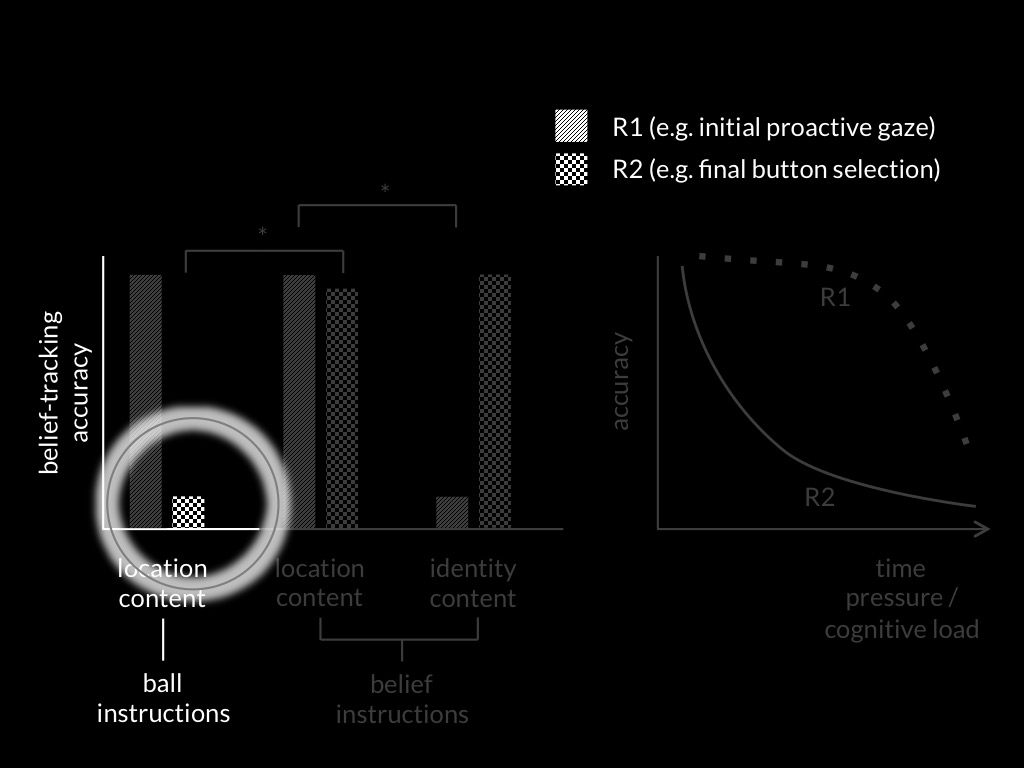
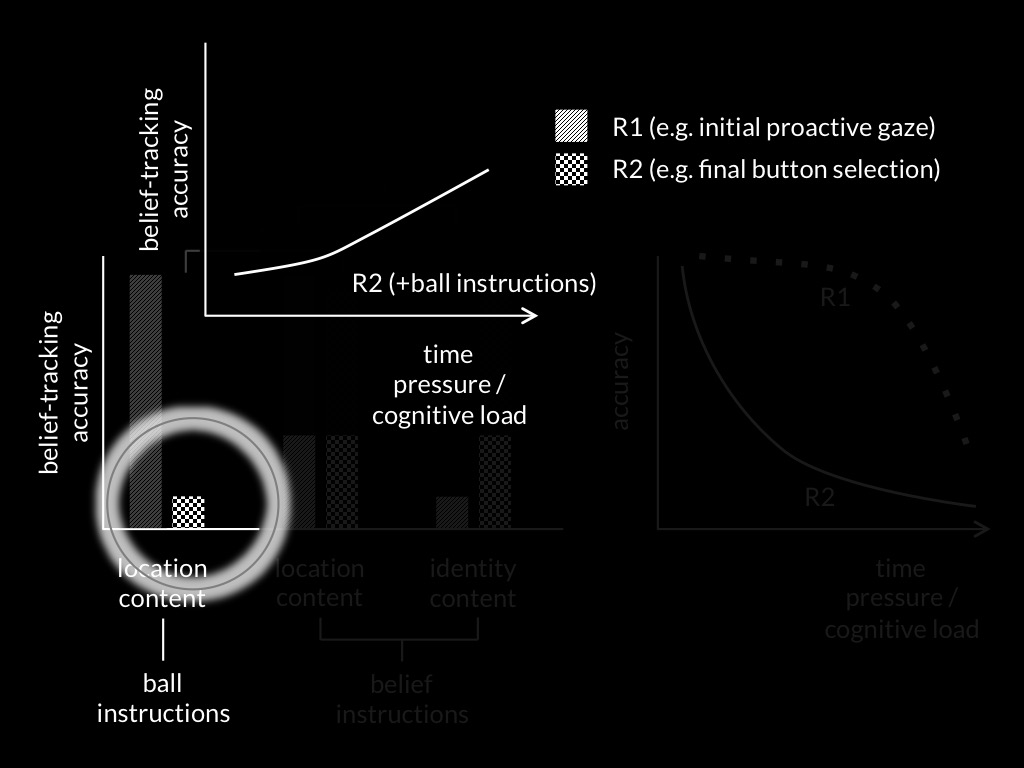

Dual Process Theory of Mindreading (core part)
Two (or more) mindreading processes are distinct:
the conditions which influence whether they occur,
and which outputs they generate,
do not completely overlap.
What about development?
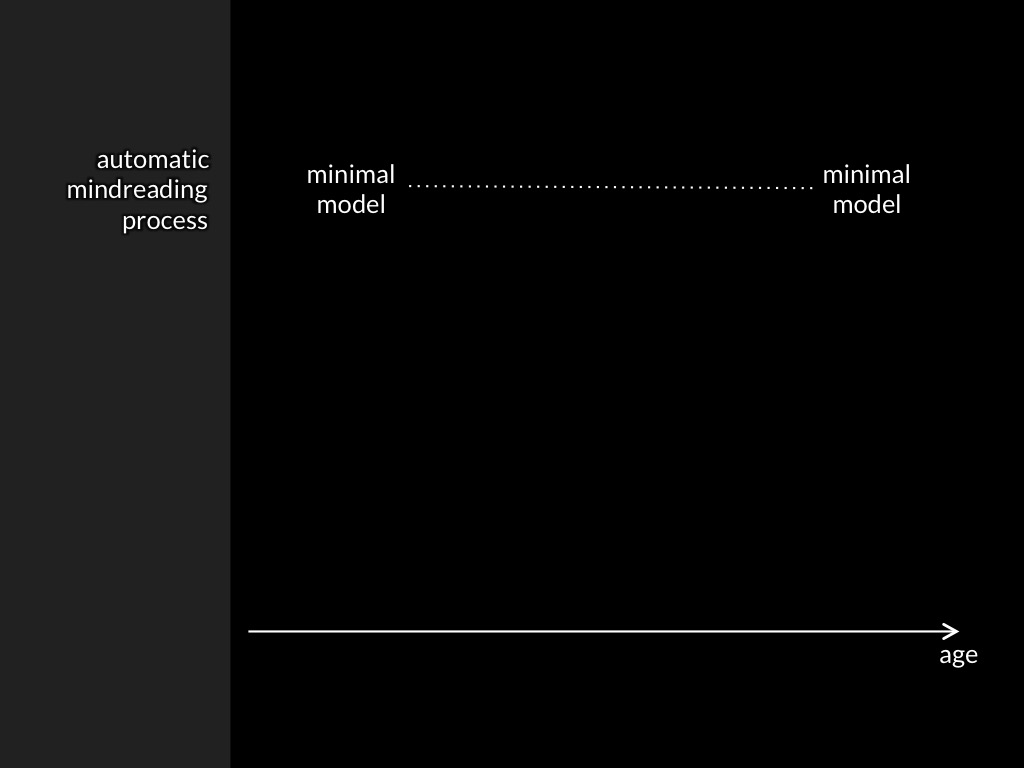
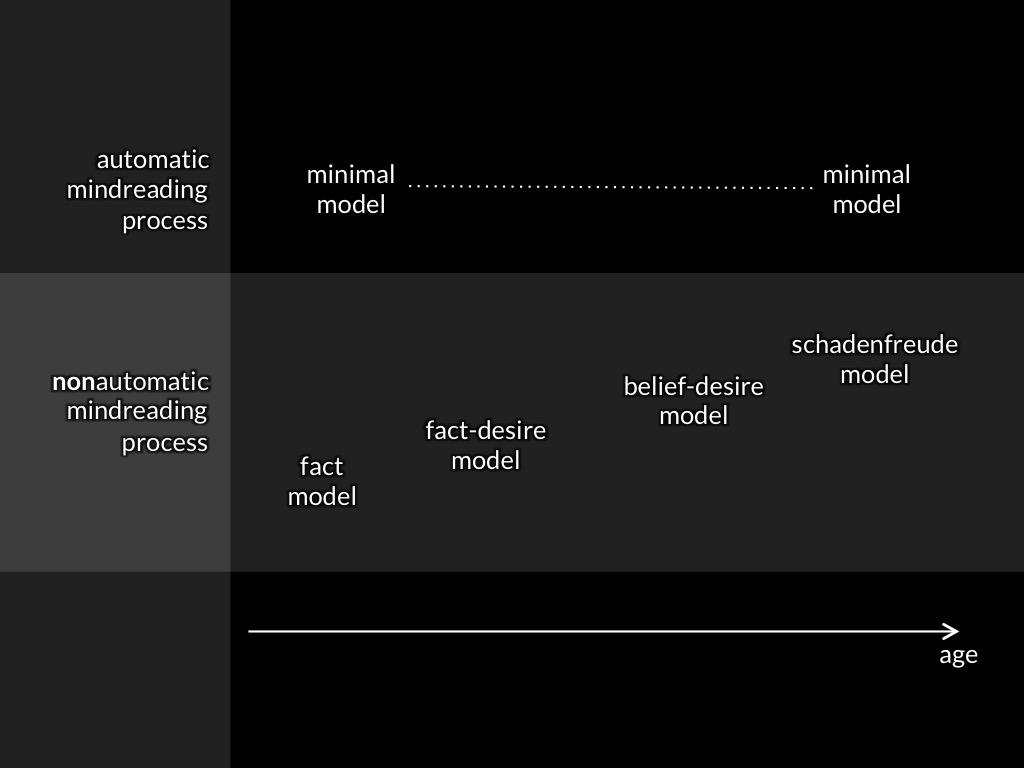

Low et al, 2014 figure 2
Q1
How do observations about tracking support conclusions about representing models?
Q2
Why are there dissociations in nonhuman apes’, human infants’ and human adults’ performance on belief-tracking tasks?
A-tasks
Children fail
because they rely on a model of minds and actions that does not incorporate beliefs
non-A-tasks
Children pass
by relying on a model of minds and actions that does incorporate beliefs
dogma
the
of mindreading

Mindreading: Conclusions
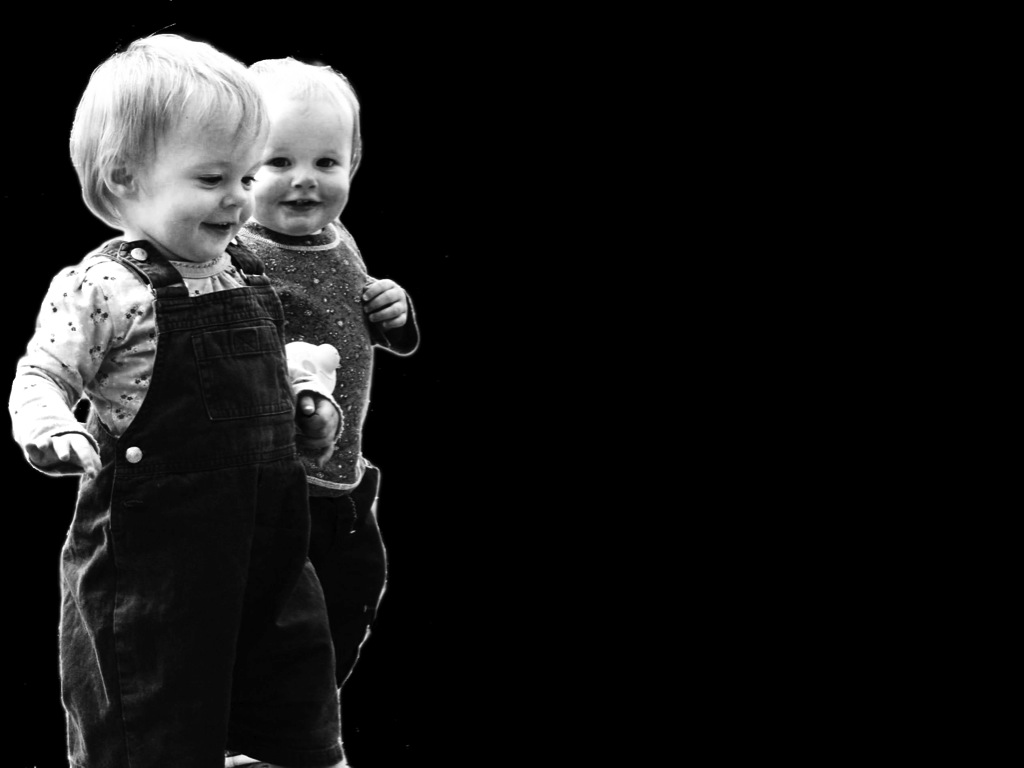
of mindreading.
A-tasks
Children fail
because they rely on a model of minds and actions that does not incorporate beliefs
non-A-tasks
Children pass
by relying on a model of minds and actions that does incorporate beliefs
dogma
the
of mindreading
Conjecture
Infants have core knowledge of minds and actions.
Core knowledge is sufficient for success on non-A-tasks.
Infants lack knowledge of minds and actions.
Knowledge is necessary for success on A-tasks.
core knowledge of minds = the representations underpining automatic belief-tracking, which rely on a minimal model of the mental.
evidence
signature limits
A-tasks
Children fail
because they rely on a model of minds and actions that does not incorporate beliefs
non-A-tasks
Children pass
by relying on a model of minds and actions that does incorporate beliefs
dogma
the
of mindreading
